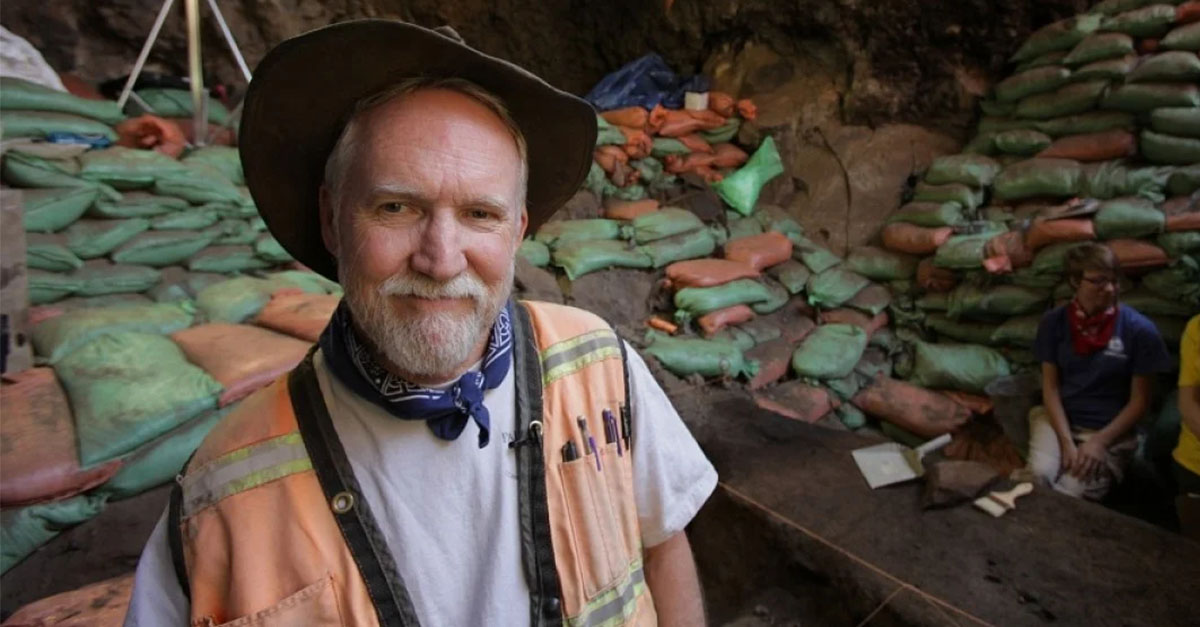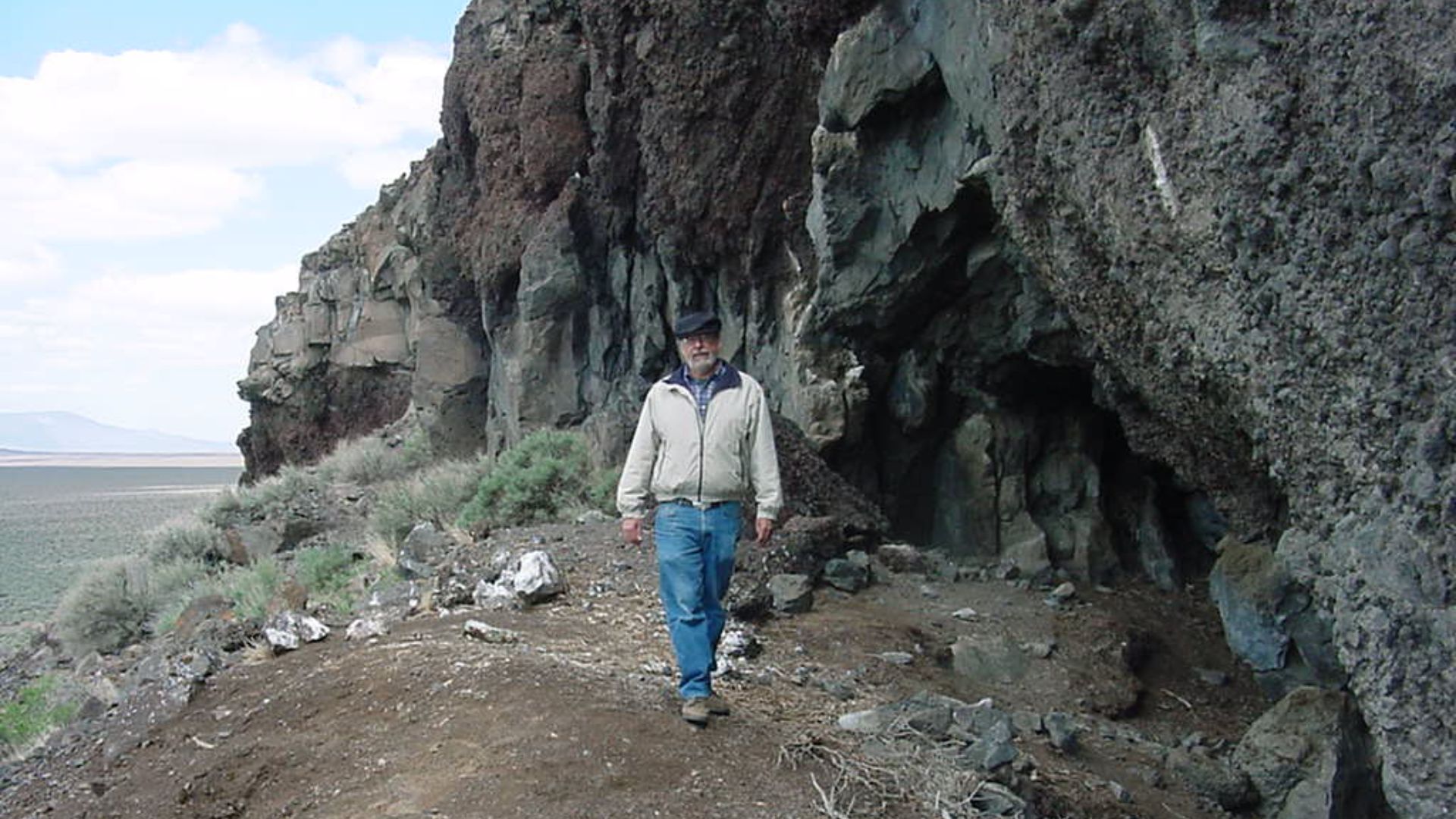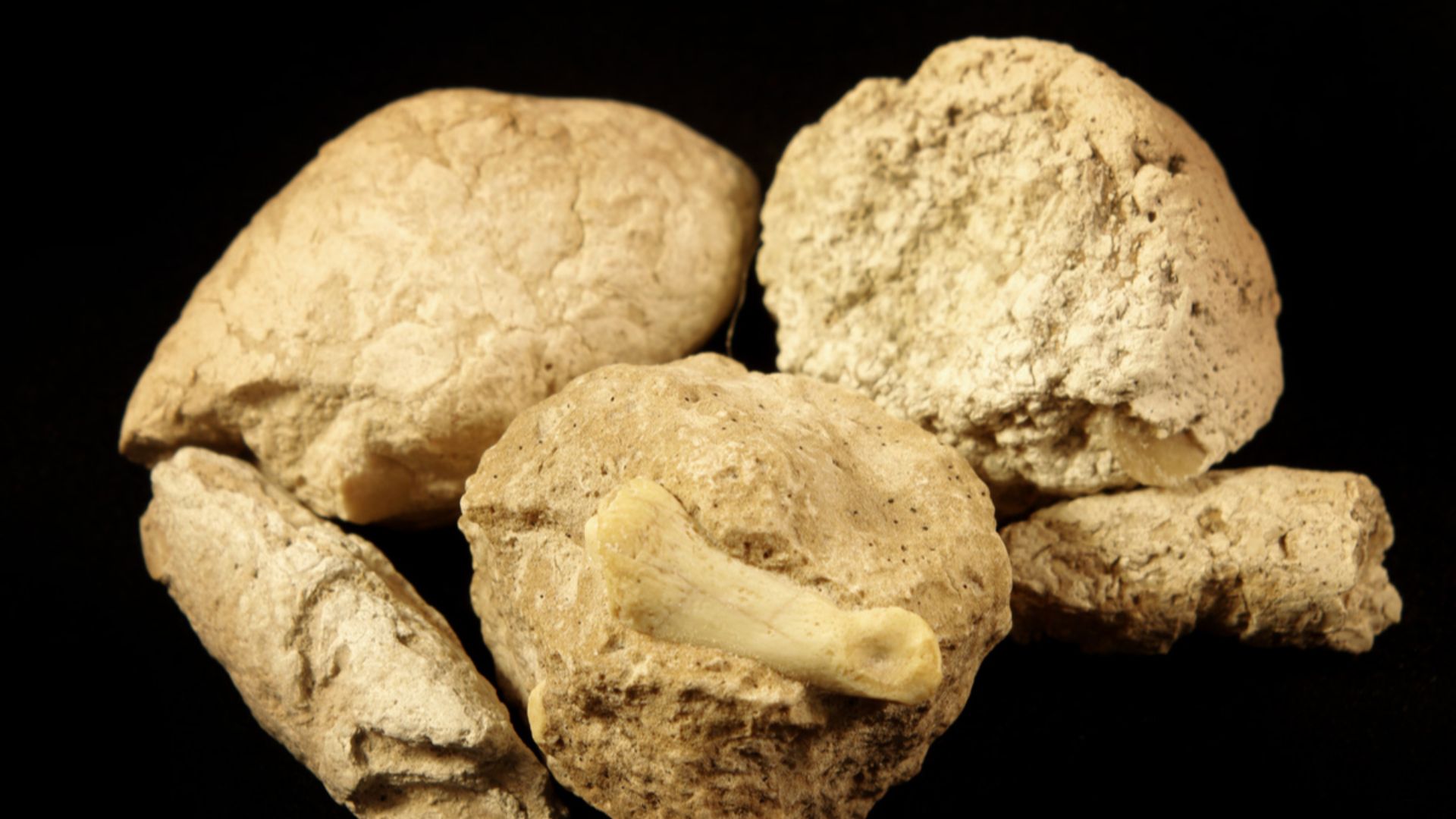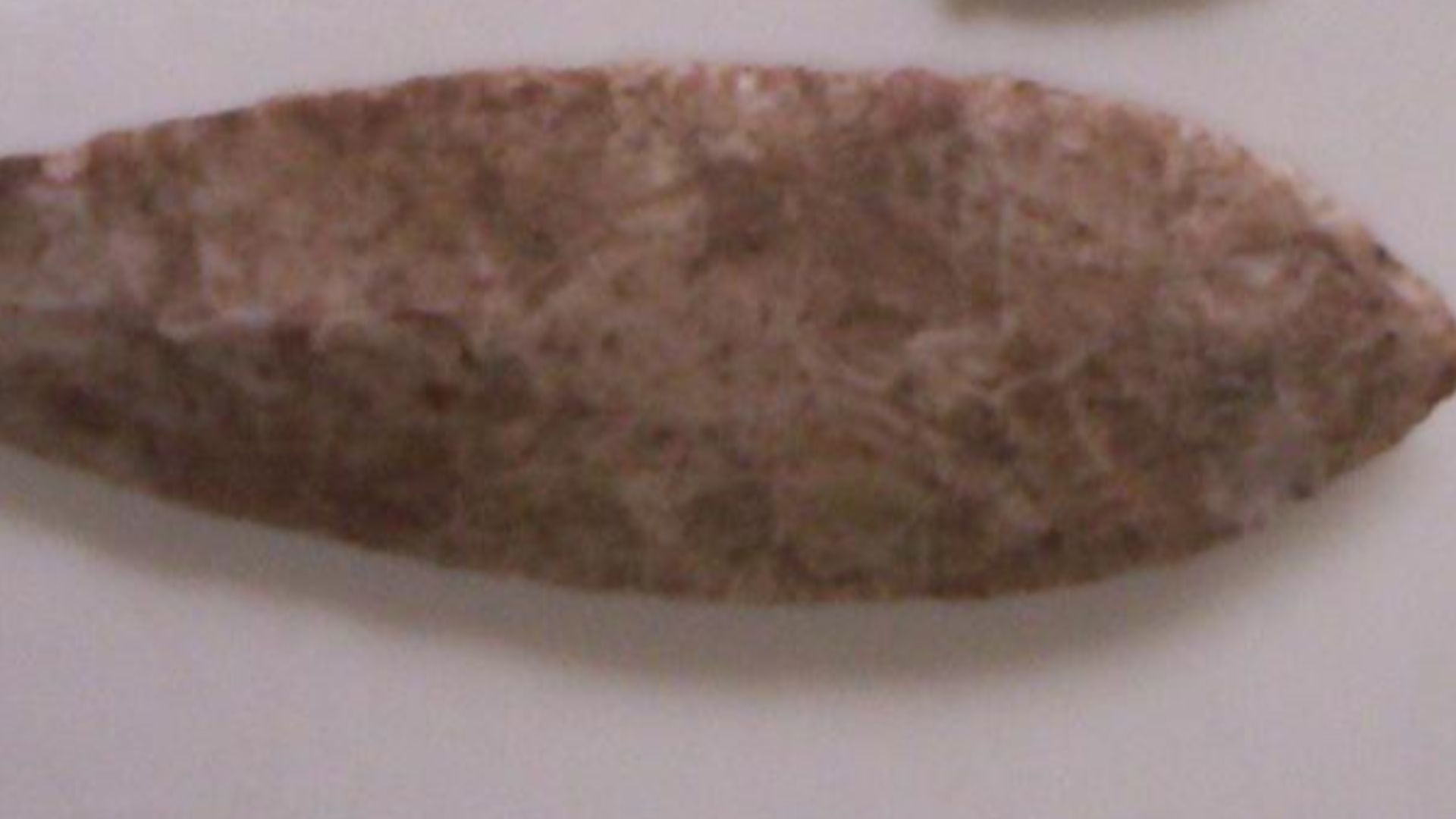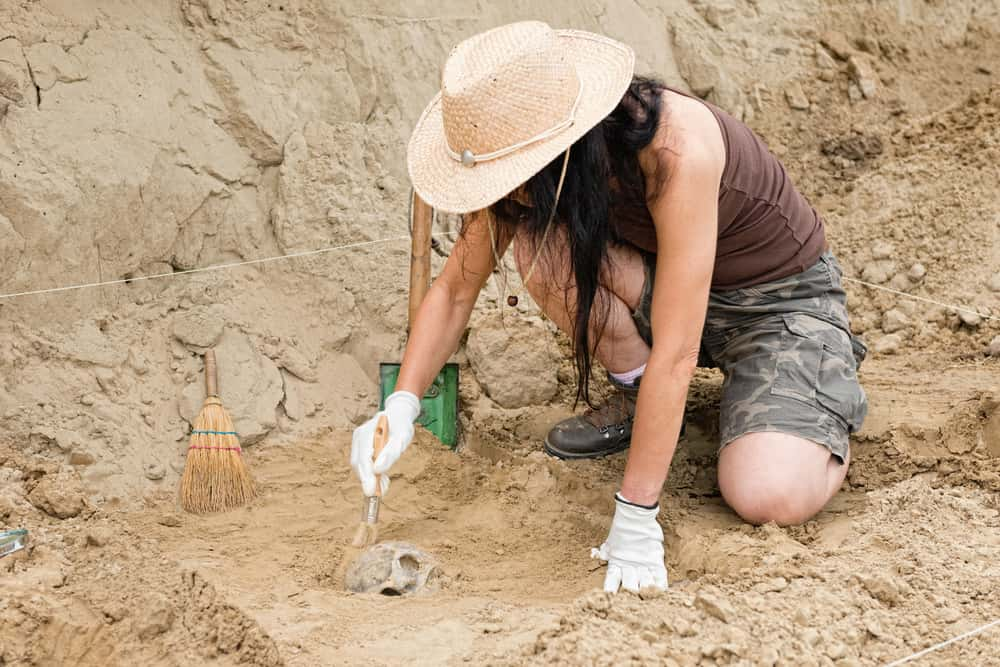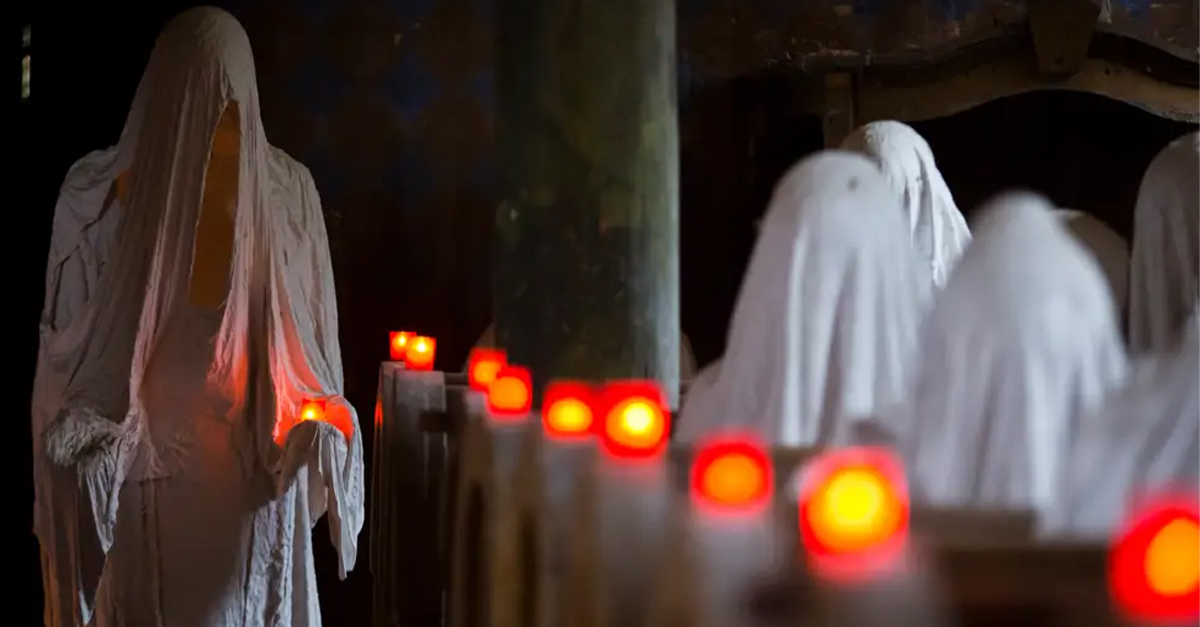Carved By Time
The story of the Paisley Caves began over 10 million years ago, when layers of Miocene and Pliocene basalt and volcanic tuff were laid down across what is now south-central Oregon. During the Pleistocene era, wave action from the ancient Summer Lake carved out the caves, sculpting eight natural chambers into the basalt ridge. Today, these caves aren’t just scenic—geologically, they’re a pristine cross-section of deep time, preserving the erosional power of Ice Age hydrology.
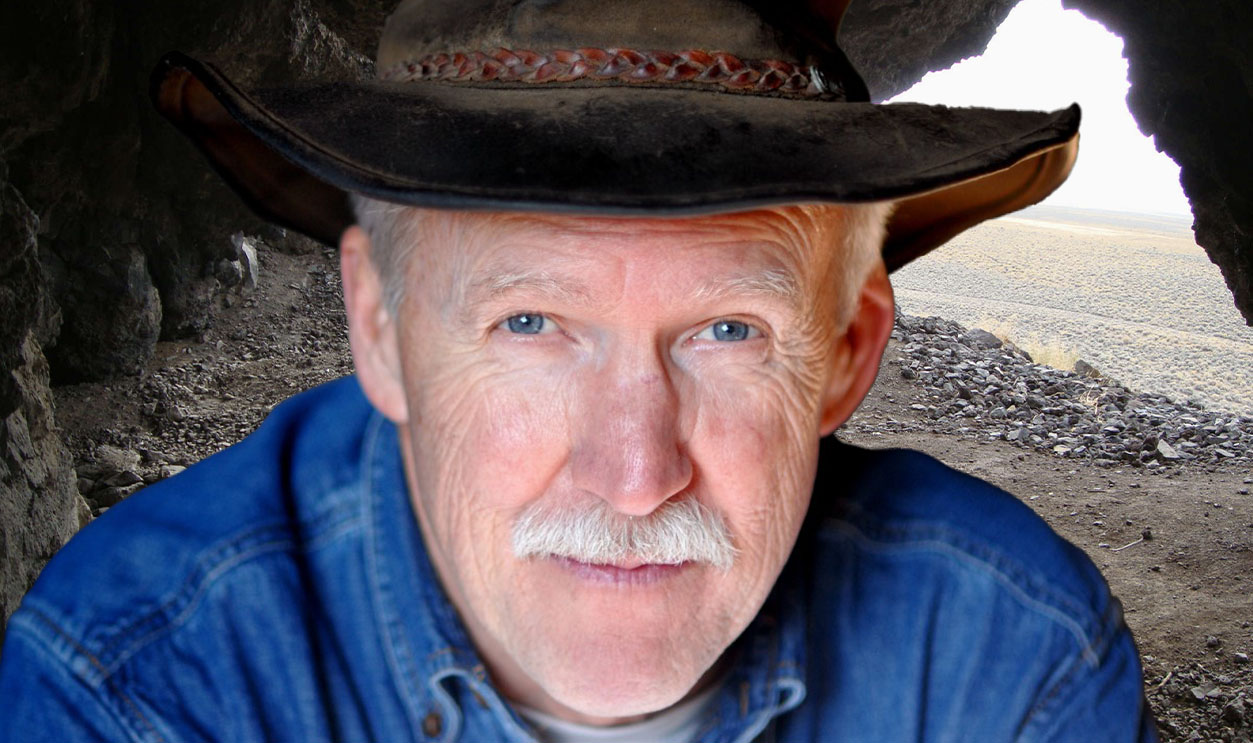
Hidden In The High Desert
The Paisley Caves are a cluster of eight shallow caves hidden in Oregon’s high desert, carved into a rocky ridge by ancient lake waves. This unassuming location in the Summer Lake basin sits at about 4,520 feet elevation and faces west, overlooking an arid expanse that was once a fertile lakeshore. Their remoteness and natural camouflage kept the caves’ secrets safe for millennia, until modern archaeologists came along in the 21st century to uncover what lay within.
A Pre-Clovis Time Capsule
The Paisley Caves shot to fame among archaeologists because they preserve evidence of human life from well before the once-accepted “Clovis-first” timeline. The site yielded the oldest directly dated human DNA in North America (about 14,300 years old), essentially a pre-Clovis time capsule that has changed our understanding of when people first arrived. In other words, these caves have become one of the earliest and most significant archaeological sites on the continent—proof that humans were in the Americas a millennium before the Clovis culture even appeared.
Luther Cressman’s Pioneering 1930s Digs
In the late 1930s, archaeologist Luther Cressman was the first to excavate the Paisley Caves. Cressman reported astonishing finds: evidence that Indigenous people had inhabited the site at the same time as extinct Pleistocene animals like camels, mastodons, and horses. However, the excavation methods and dating techniques of the 1930s were rudimentary, and the cave deposits were not well understood, so he couldn’t definitively prove the great age of these finds. Many in the scientific community remained skeptical of Cressman’s claims, and for decades his discoveries were intriguing hints—but not ironclad proof—of very ancient human presence.
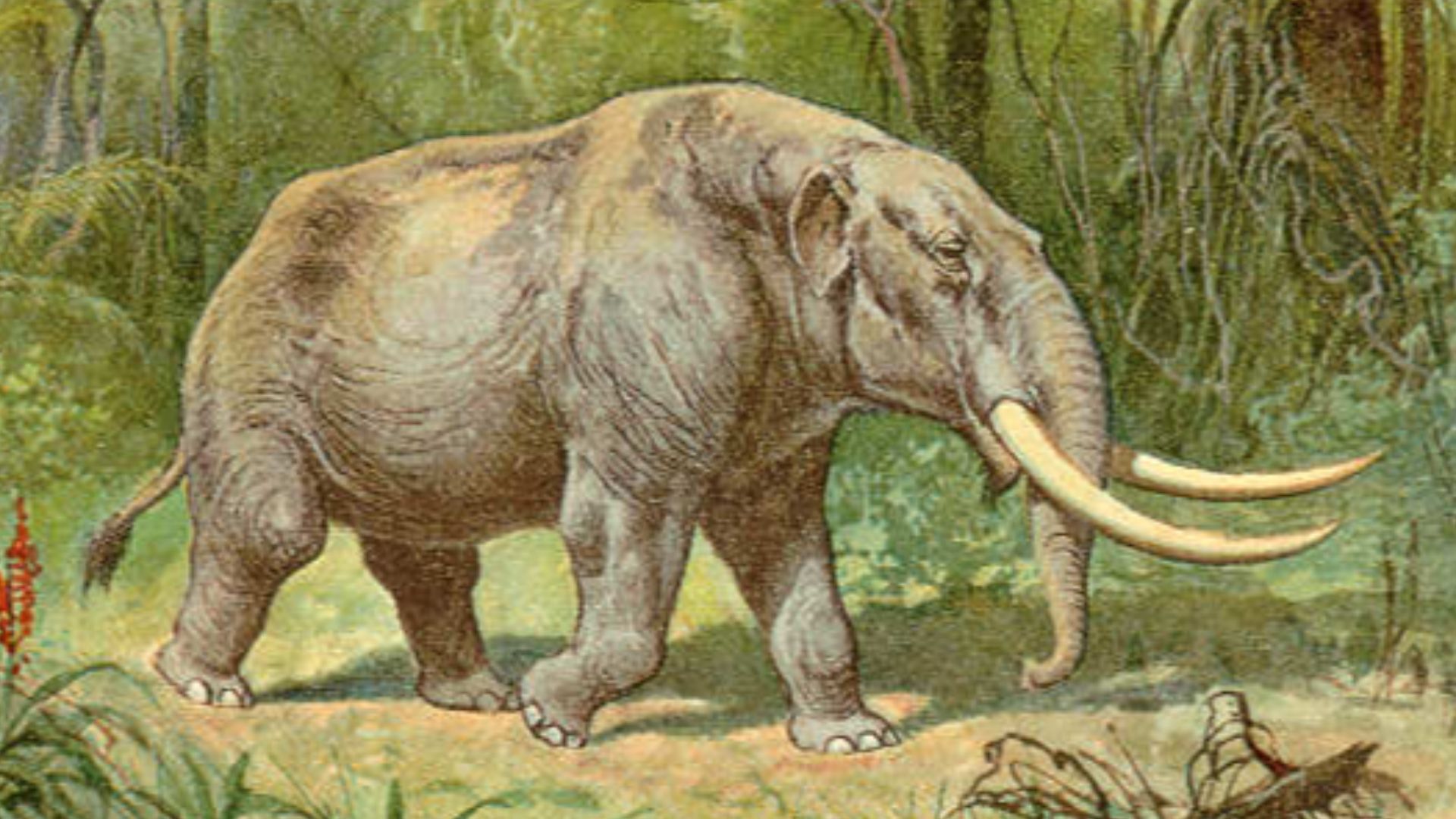 Heinrich Harder (1858-1935), Wikimedia Commons
Heinrich Harder (1858-1935), Wikimedia Commons
What’s A Coprolite?
It’s not every day that 14,000-year-old poop rewrites history—but that’s exactly what happened at the Paisley Caves. Scientists refer to dried or mineralized dung as coprolites, essentially ancient fecal remains preserved over time. Coprolites might sound unappealing, but they are treasure troves of information: they can contain DNA, food particles, and other clues about the diet, health, and environment of ancient beings. In Paisley’s case, a few pieces of fossilized human excrement provided the key evidence for a human presence in Oregon long before Clovis times.
Reopening The Paisley Caves In The 2000s
In the early 2000s, archaeologist Dennis Jenkins of the University of Oregon decided to re-excavate the Paisley Caves with fresh eyes and improved methods. Decades after Cressman’s initial dig, Jenkins believed the caves still held untapped evidence about the first Americans. Starting in 2002, his team conducted systematic excavations and analyses, and it didn’t take long before remarkable new discoveries began to emerge—including the very coprolites that would soon put Paisley Caves on the map.
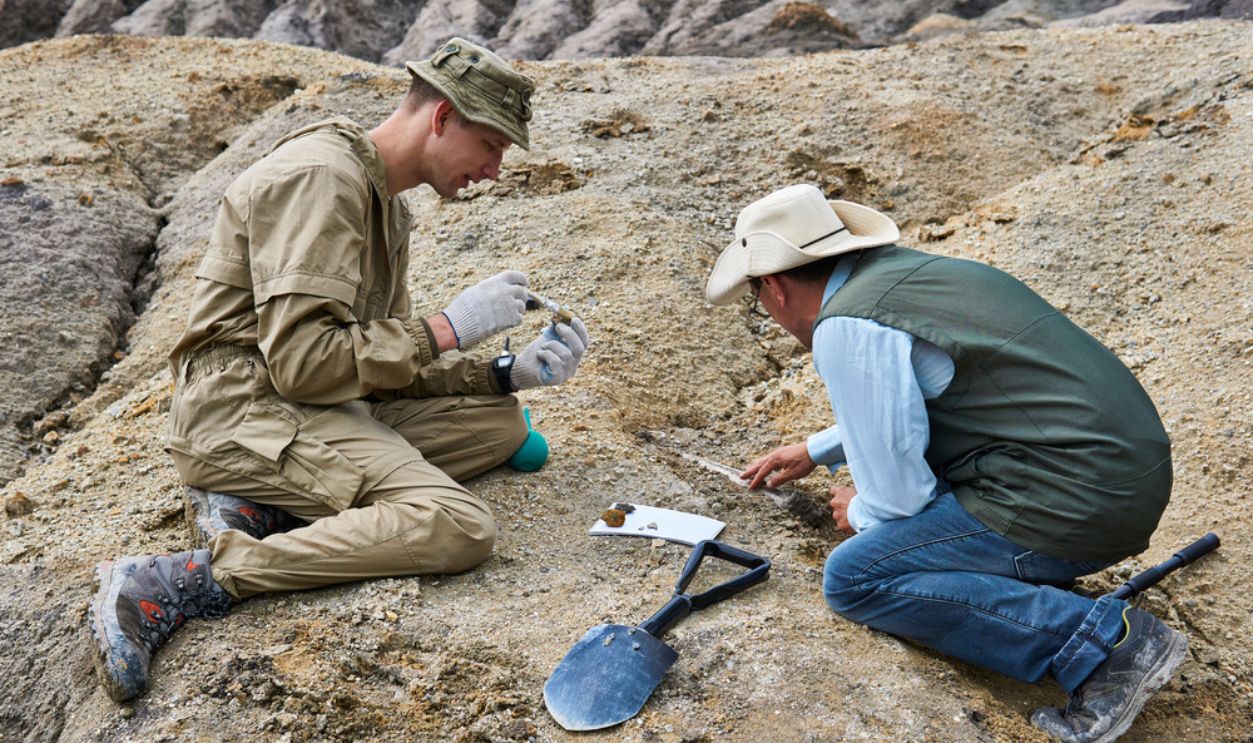 Evgeny Haritonov, Shutterstock
Evgeny Haritonov, Shutterstock
Dennis Jenkins: Leading The Paisley Caves Project
If the Paisley Caves have a modern champion, it’s Dennis Jenkins. A veteran archaeologist at the UO’s Museum of Natural and Cultural History, Jenkins led the renewed excavations and was the one who first recognized the significance of those ancient coprolites nearly two decades ago. He is known for embracing a multidisciplinary approach and encouraging healthy skepticism—famously noting that scientific understanding advances by addressing doubts head-on.
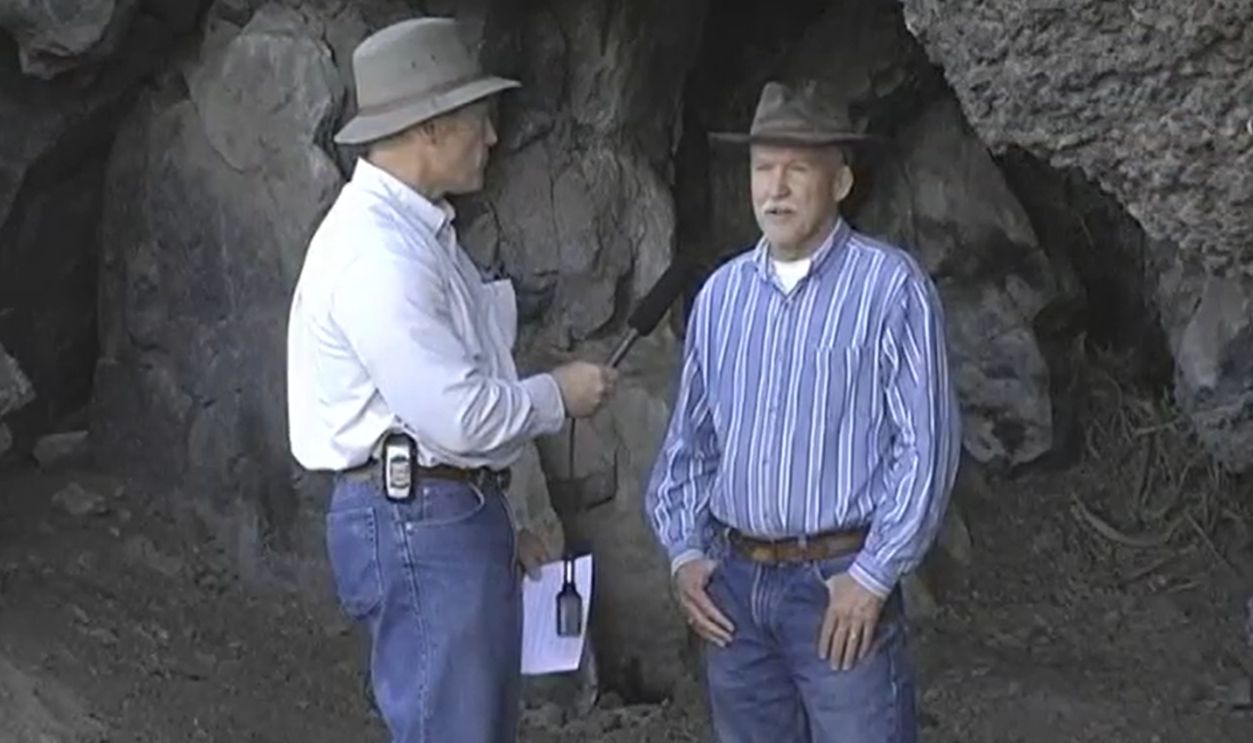 Paisley Five Mile Point Caves, Oregon, Guy Prouty
Paisley Five Mile Point Caves, Oregon, Guy Prouty
Shifting Sands
The Paisley Caves’ sediments weren’t laid down in neat layers—they were shaped by a chaotic mix of dust storms, floods, roof collapses, and burrowing animals. This jumble, known as bioturbation, meant that artifacts could end up out of order at the microscale. While some layers stayed intact, others required extreme caution in interpretation. Jenkins’s team had to unravel this natural mess to figure out what evidence truly belonged where.
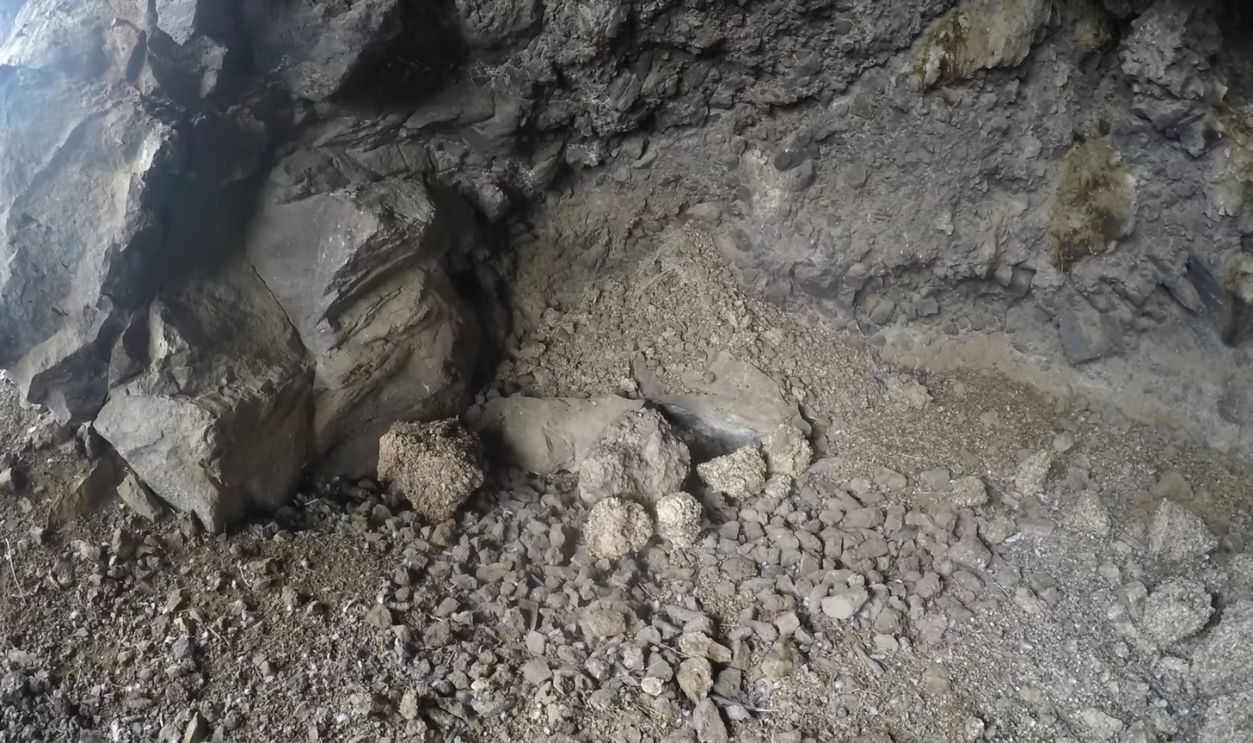 Paisley Caves, part 1, 1520p60, water_skipper
Paisley Caves, part 1, 1520p60, water_skipper
A Thin Slice Of History
To make sense of the site’s messy stratigraphy, researchers turned to soil micromorphology, slicing cave sediments thin enough to study under a microscope. These revealed ancient water pathways and calcite coatings—evidence that even molecules like DNA might have moved after burial. That meant human clues could be displaced, and interpretations had to be cross-checked with multiple methods. Microscopic analysis proved crucial for separating genuine human evidence from nature’s interference.
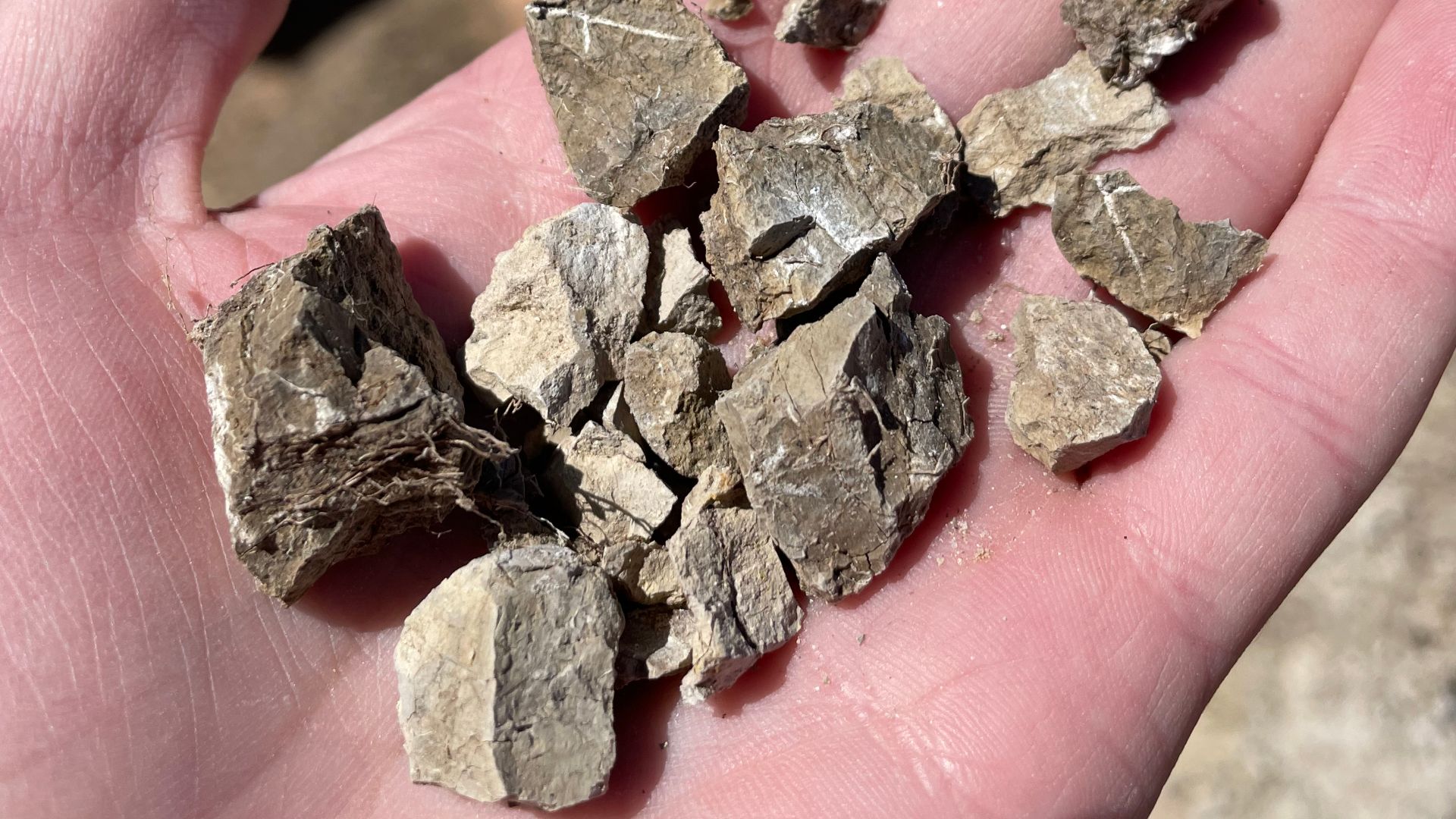 Glossic-hapludalf, Wikimedia Commons
Glossic-hapludalf, Wikimedia Commons
Keeping The Digs Clean
Jenkins’s team went to great lengths to ensure that any evidence they collected was truly ancient and not tainted by modern DNA. They were acutely aware that earlier excavations had issues with context and cleanliness, so at Paisley, the crew treated the site more like a forensic scene than a traditional dig. These rigorous contamination-control measures were crucial for confidently claiming that the genetic material found in the cave truly came from ancient inhabitants and not from the archaeologists handling the samples.
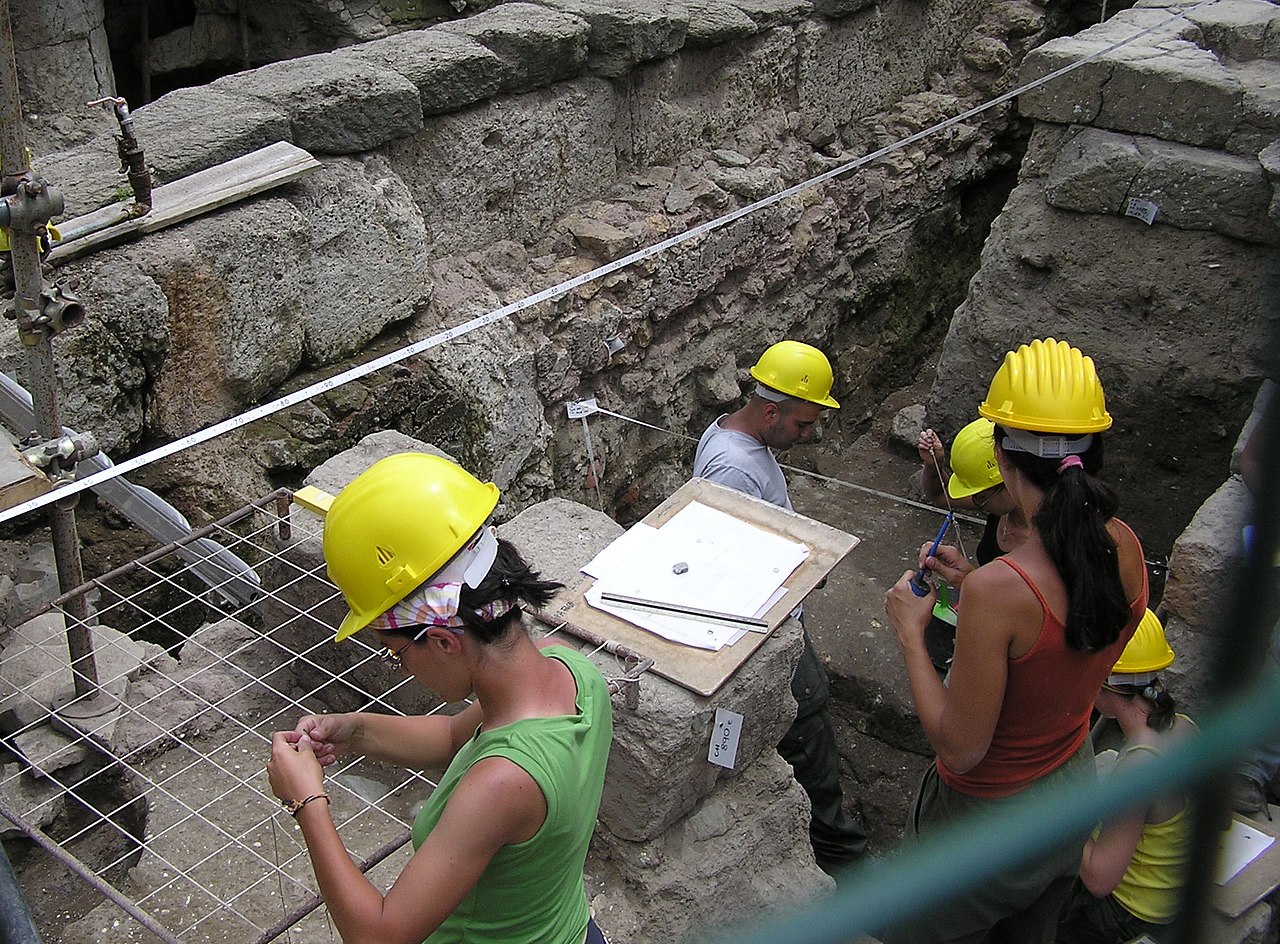 Arpingstone, Wikimedia Commons
Arpingstone, Wikimedia Commons
Archaeology Meets Chemistry And Genetics
Unlocking Paisley’s secrets required a multidisciplinary team. Jenkins did not work alone—he partnered with geneticists, geochemists, and other specialists from around the world to analyze the cave finds. Jenkins collaborated with experts like Eske Willerslev, who confirmed human DNA in the coprolites, while others verified results through biomarker and radiocarbon analysis. The project fused fieldwork with high-tech lab science.
 Mikal Schlosser, Wikimedia Commons
Mikal Schlosser, Wikimedia Commons
Ancient Feces, New Insights
In the summer of 2007, University of Oregon students unearthed dried poop seven feet down in a Paisley Cave, an unassuming find with massive implications. These coprolites lay near a hearth and Ice Age animal bones, suggesting human activity in the same layer. At the time, no one guessed these droppings would rewrite American prehistory. But that’s exactly what they did.
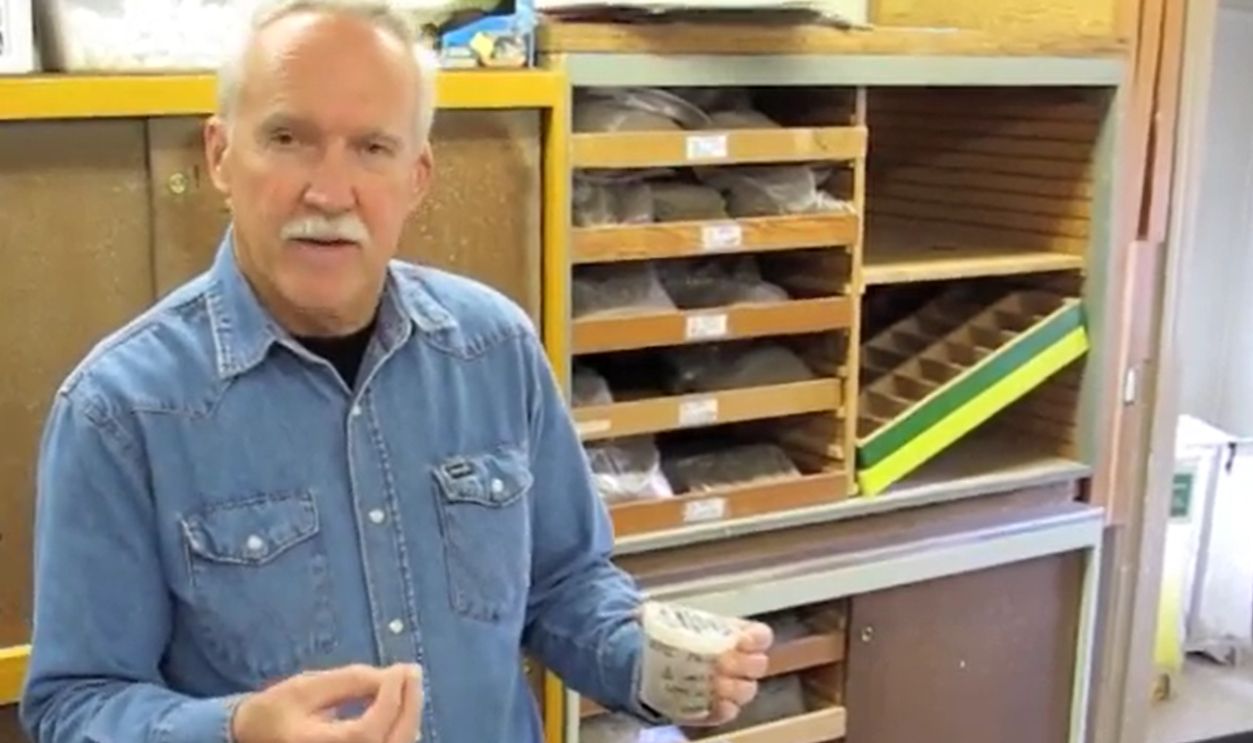 Dennis Jenkins Coprolite Work, University of Oregon
Dennis Jenkins Coprolite Work, University of Oregon
Oldest DNA In North America
The coprolites yielded something extraordinary: human DNA dating back 14,300 years (roughly 12,000 BC), making them the oldest directly dated remains in North America. This pushed human presence in the Americas over a thousand years before
Clovis culture. It wasn’t just a footnote, it was a milestone that shattered the Clovis-first model.
Pre-Clovis Timelines Emerge
Multiple radiocarbon tests from coprolites and surrounding layers at the Paisley Caves dated human activity to over 14,300 years ago, more than 1,000 years before Clovis culture. This wasn’t a one-off anomaly, dozens of dates pointed to a consistent pre-Clovis occupation. The evidence forced archaeologists to recalibrate the timeline of human presence in North America. The Paisley Caves didn’t just suggest early habitation—they proved it.
 Yulia Kolosova, Wikimedia Commons
Yulia Kolosova, Wikimedia Commons
Western Stemmed Points At Paisley
Excavations at the Paisley Caves turned up Western Stemmed Tradition tools—narrow, stemmed projectile points – rather than the famous fluted Clovis types. These artifacts, found in deposits as old as 14,000 years, indicated a separate cultural tradition that coexisted with or even predated Clovis. Their distinctive shape and age confirmed that early North America wasn’t culturally uniform.
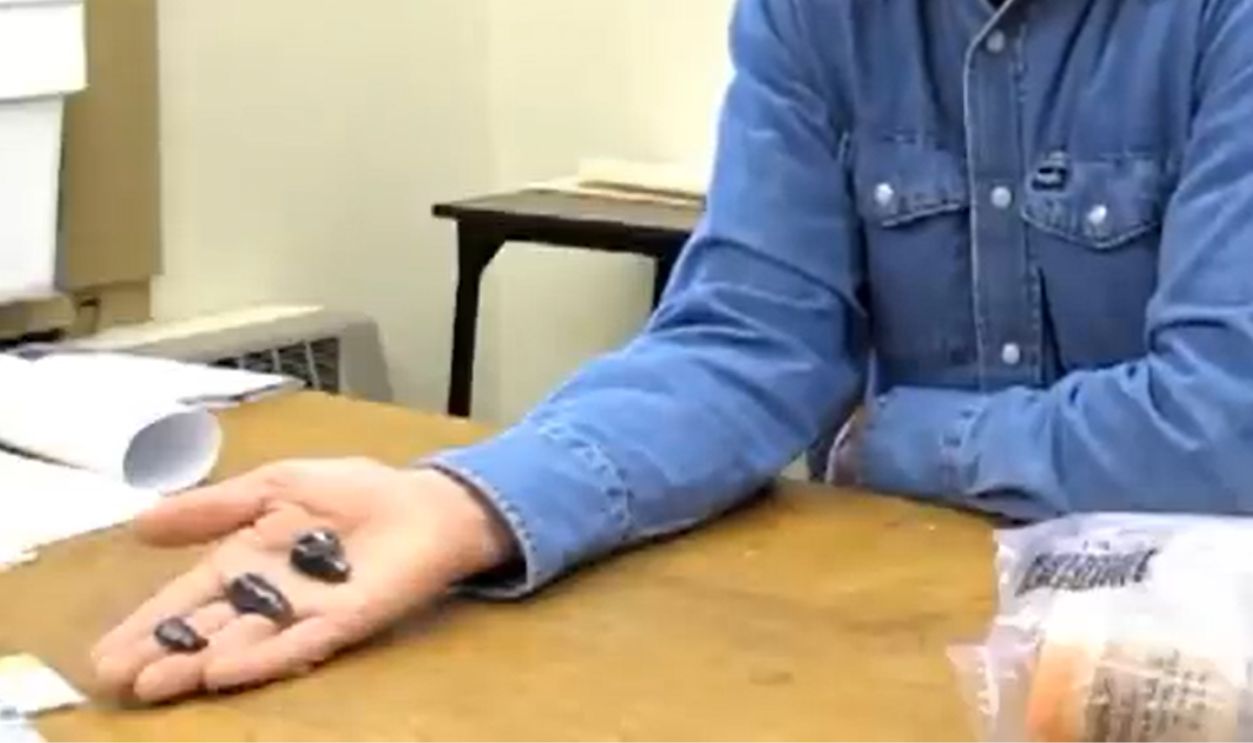 Jenkins Western Stem, University of Oregon
Jenkins Western Stem, University of Oregon
Beyond The Poop
The Paisley Caves’ ancient coprolites were found alongside a rock-lined hearth, Ice Age animal bones, and flaked stone tools—strong indicators of human life. In Cave 5, these artifacts included remains of fish, birds, and large mammals, suggesting hunting or food processing. Some bones showed possible cut marks, and scattered tool debris pointed to on-site crafting. Together, the finds built a full archaeological picture—not just isolated poop, but a lived-in Ice Age camp.
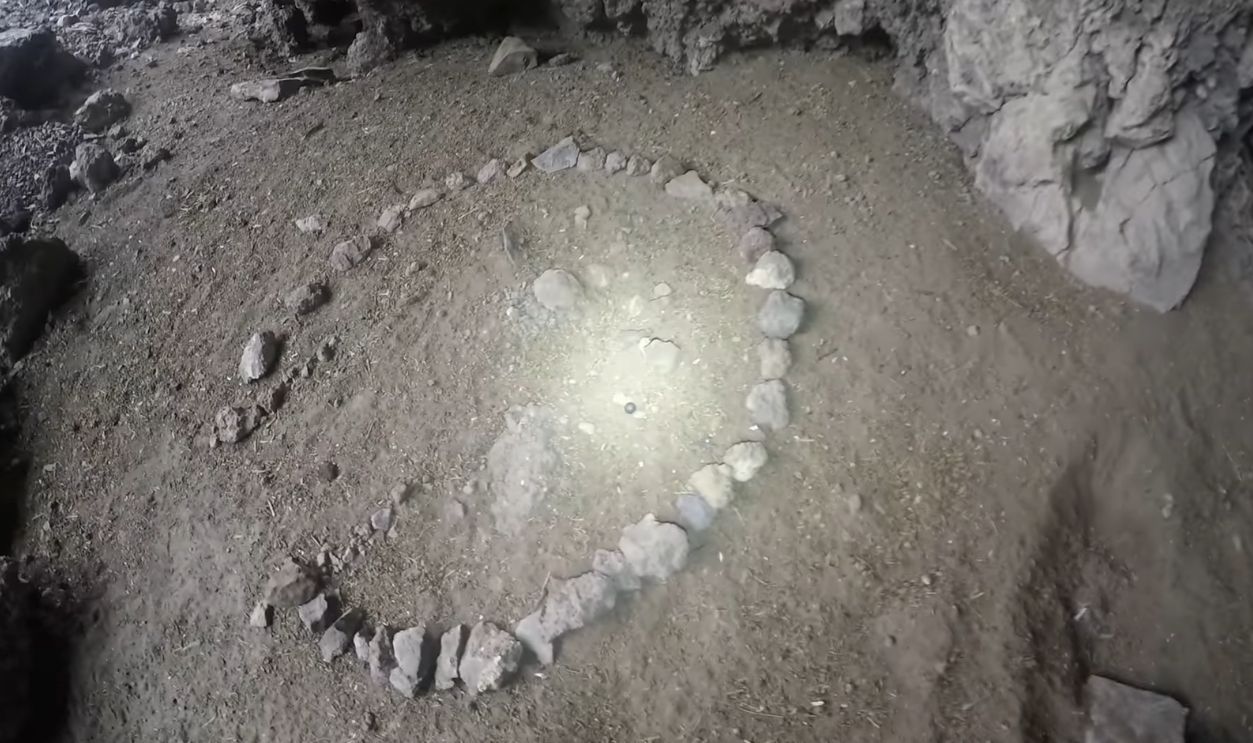 Paisley Caves, part 2, 1520p60, water_skipper
Paisley Caves, part 2, 1520p60, water_skipper
Another Pre-Clovis Clue
Among the Paisley Caves’ standout finds was a serrated bone tool—carefully shaped, likely used for cutting or scraping, and unmistakably human-made. Found in the same stratigraphic layer as the oldest coprolites, this artifact was radiocarbon dated to over 14,000 years ago. Its age confirmed an independent line of human activity beyond fecal evidence. For skeptics, it was hard to dismiss: a crafted tool in situ meant real Ice Age hands had worked this cave.
A Bulrush Fiber: Dating By A Delicate Thread
Archaeologists uncovered a tiny bulrush fiber—possibly from cordage or weaving—just above a coprolite layer. Radiocarbon dated to 12,270 years ago, the fiber showed early humans weren’t just surviving, but crafting. Its deliberate manufacture ruled out natural origin—wild animals don’t twist plants into threads. This little strand backed up the human timeline from an entirely different angle: textile skill from the prehistoric toolkit.
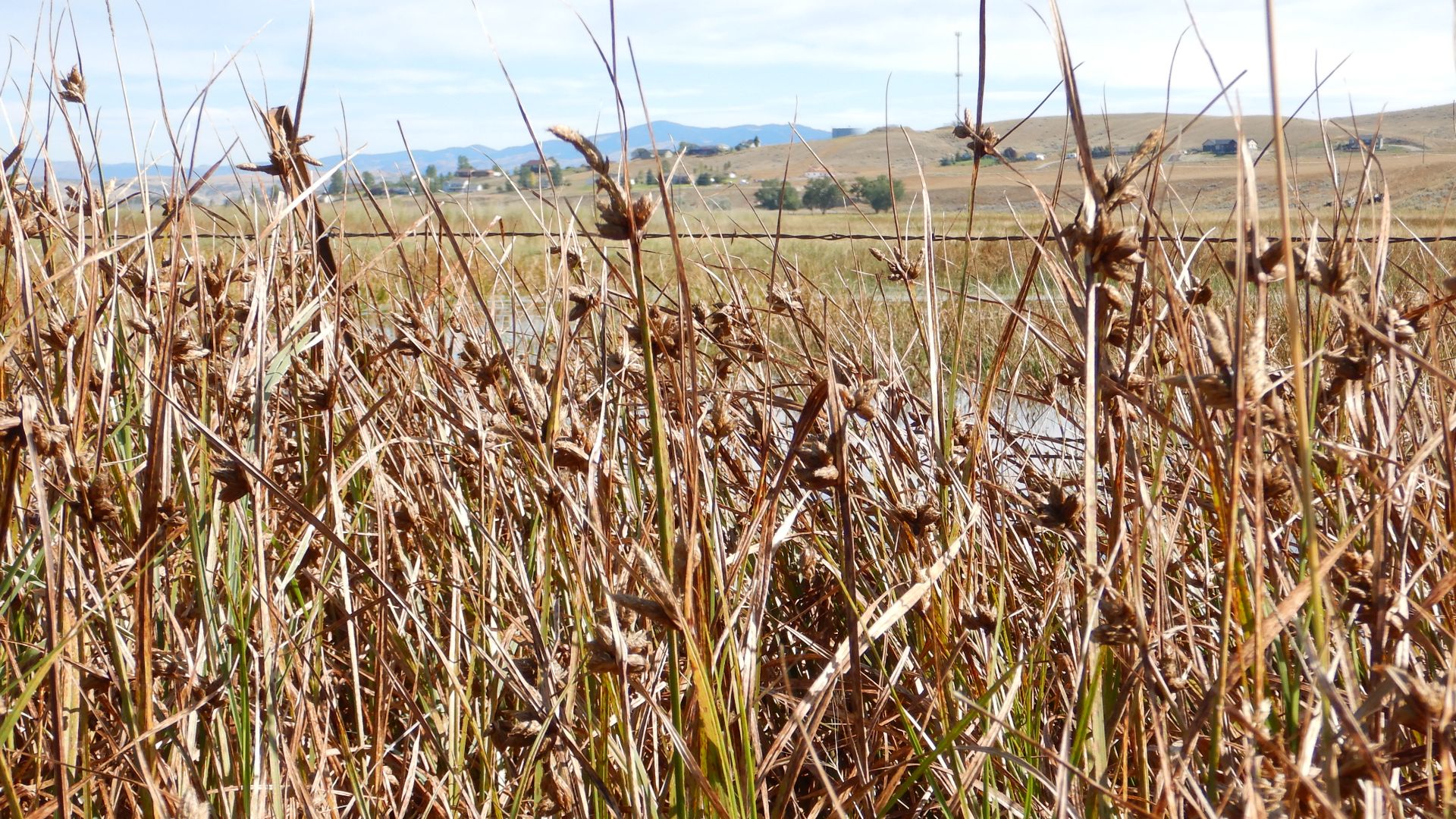 Matt Lavin from Bozeman, Montana, USA, Wikimedia Commons
Matt Lavin from Bozeman, Montana, USA, Wikimedia Commons
Ancient Menu
Microscopic analysis of Paisley coprolites revealed a diet as varied as it was clever. Paleo occupants consumed wild grasses, seeds, berries, rodents, sage-grouse, fish, and even beetles—a forager’s buffet. The diversity confirmed human origin (no animal eats that wide a range) and showed how Ice Age people made use of every edible resource. From protein to plants, nothing in their environment went to waste.
 Ron Knight from Seaford, East Sussex, United Kingdom, Wikimedia Commons
Ron Knight from Seaford, East Sussex, United Kingdom, Wikimedia Commons
Ice Age Fauna: Big Animals, Big Questions
In the same layers as human artifacts, Paisley researchers found bones from extinct Pleistocene megafauna like camels, horses, and bison. Some of these remains showed possible cut marks, raising the tantalizing question: Were early humans hunting or scavenging these massive creatures? While conclusive proof of butchery is debated, the co-presence of tools, coprolites, and big game bones is undeniable. It places humans and Ice Age giants side-by-side in Oregon’s ancient past.
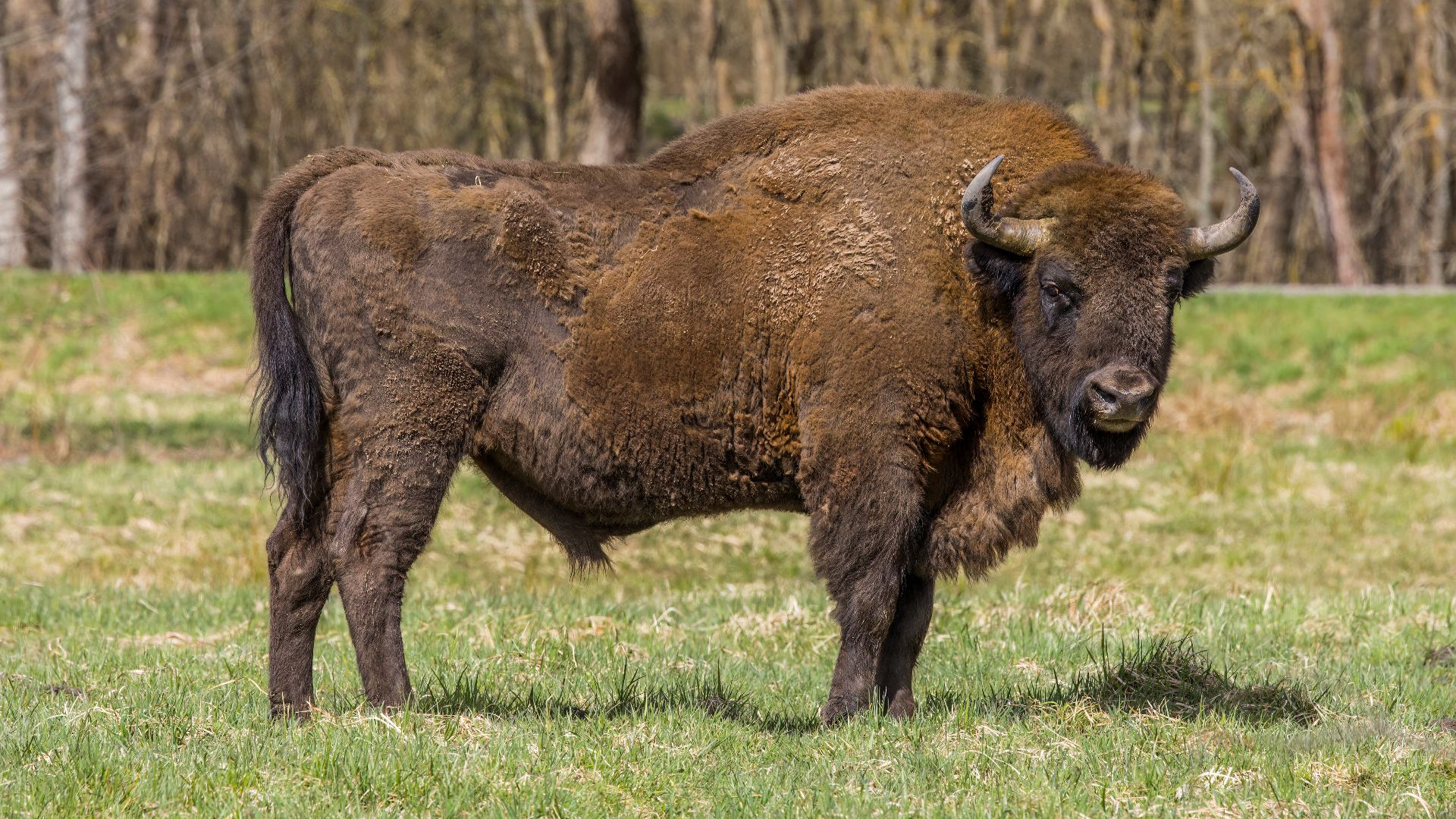 Charles J. Sharp, Wikimedia Commons
Charles J. Sharp, Wikimedia Commons
Camp Or Home?
The Paisley Caves likely served as seasonal stopovers, not permanent homes, for Ice Age hunter-gatherers. Small hearths, limited tools, and cave size suggest short-term use, possibly for days or weeks, while following game or gathering plants near the ancient Summer Lake. During resource-rich seasons, the caves offered shelter and convenience—but likely not year-round comfort. Think of it as a prehistoric lakeside base camp.
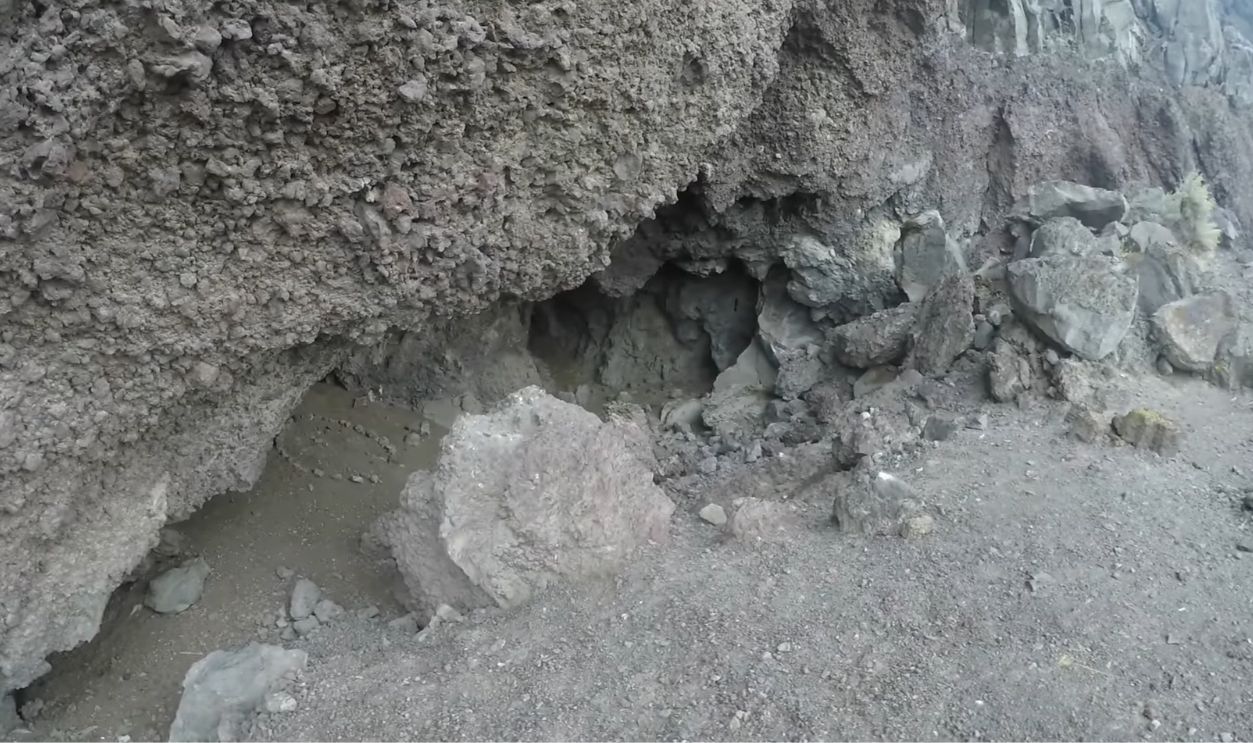 Paisley Caves, part 2, 1520p60, water_skipper
Paisley Caves, part 2, 1520p60, water_skipper
Genetic Proof Of People
In 2008, geneticist Eske Willerslev and team extracted mitochondrial DNA from Paisley coprolites and identified it as human, specifically Native American haplogroups. This wiped out any doubts that coyotes or bears left the droppings—these were made by people over 14,000 years ago. The DNA wasn’t just ancient—it genetically linked the cave’s occupants to modern Indigenous populations. That single strand of DNA became the biological anchor for rewriting American prehistory.
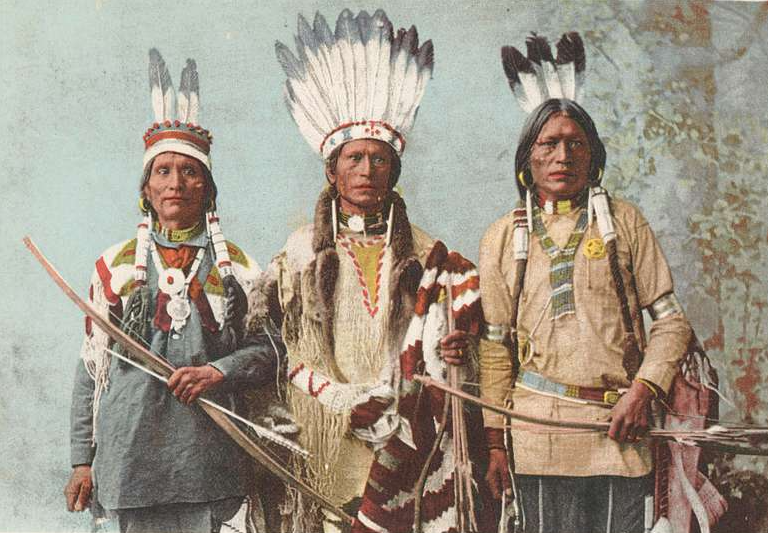 New York Public Library, Picryl
New York Public Library, Picryl
Human Or Beast? Identifying Coprolites
Determining whose poop was who's at Paisley wasn’t simple—coprolites from humans, camelids, canines, and even mountain lions turned up. Some samples initially thought to be human showed only animal DNA, while others revealed mixed DNA, possibly from ancient contamination (like a dog urinating on a human coprolite). These complications proved that visual identification wasn’t enough. Only multi-method analysis—DNA, biomarkers, and stratigraphy—could separate human traces from animal ones with confidence.
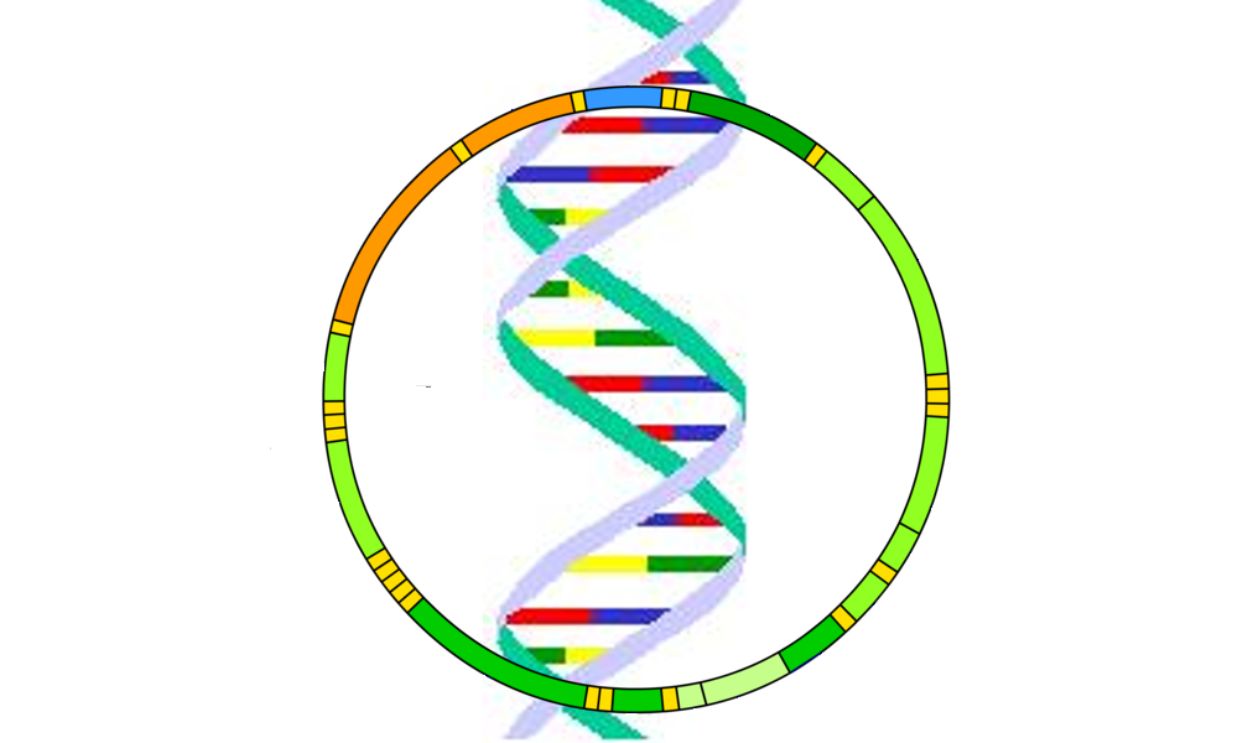 Archaeogenetics, CC BY-SA 3.0, Wikimedia Commons
Archaeogenetics, CC BY-SA 3.0, Wikimedia Commons
Doubting The Paisley Find
When Jenkins published Paisley’s pre-Clovis findings, critics questioned the human origin of the coprolites, citing risks like DNA leaching and mixed cave layers. Without bones or tools in direct association, some dismissed the claim as “old poop in a cave”. They feared modern DNA might have seeped into ancient organic material, muddying the dating. The skepticism was fierce—but it forced the team to strengthen their case with even tighter controls and cross-verified methods.
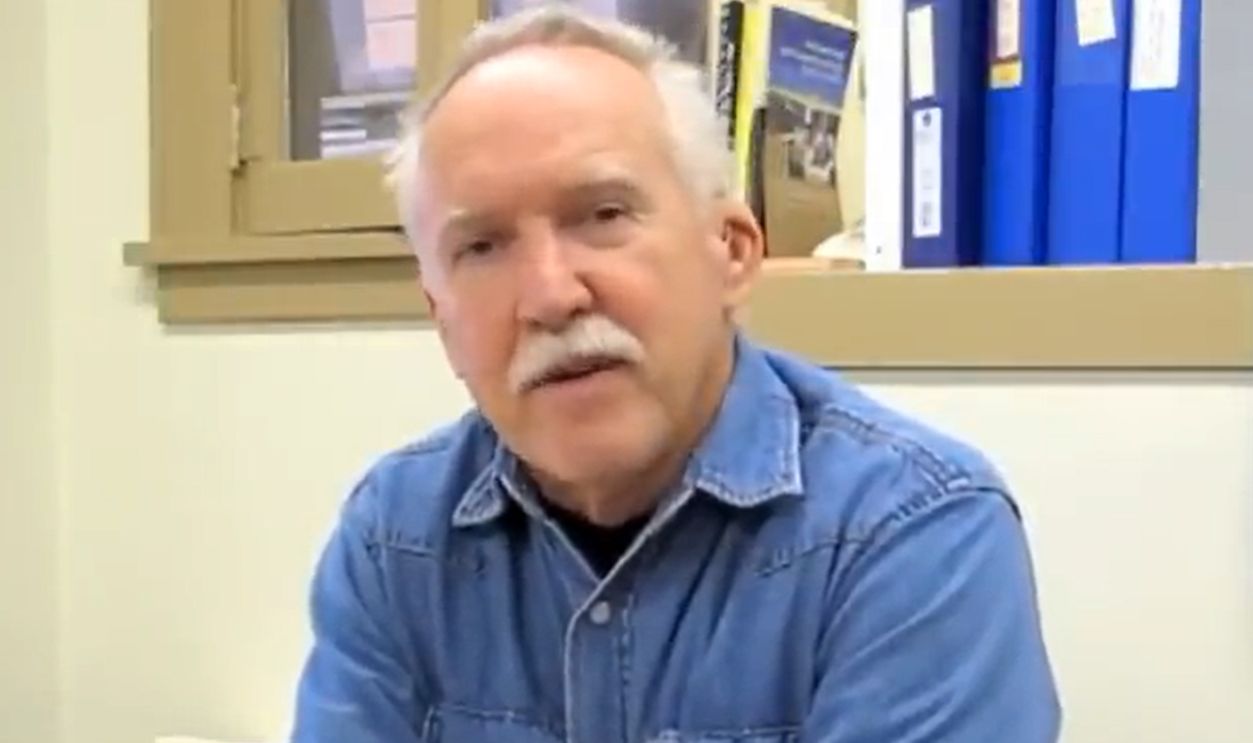 Jenkins Western Stem, University of Oregon
Jenkins Western Stem, University of Oregon
Jenkins’ 2009 Paisley Summit
In 2009, Jenkins invited skeptics to the Paisley Caves for a rare, hands-on summit—letting them examine the dig site, methods, and evidence directly. Critics scrutinized stratigraphy, coprolite context, and dating procedures right where the discoveries happened. The gamble worked: many skeptics left convinced by what they saw. The summit turned out to be a turning point that transformed dissent into growing consensus.
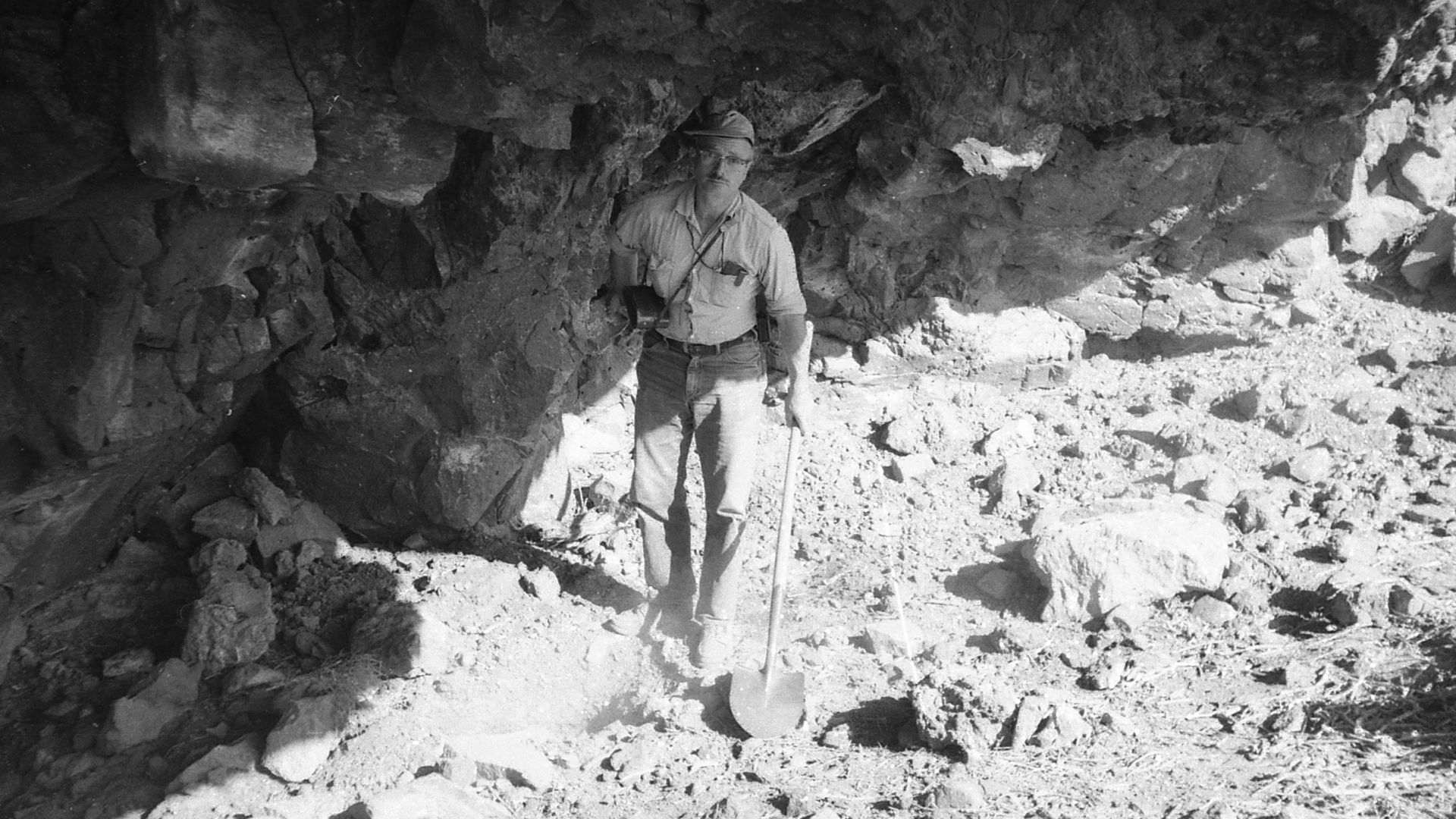 John Atherton, Wikimedia Commons
John Atherton, Wikimedia Commons
Carbon Dating Overdrive: 280 Dates And Counting
To shut down doubts, Jenkins’s team didn’t just radiocarbon date a few finds—they dated everything: coprolites, hearth charcoal, bones, plant fibers, and more. In total, they ran over 280 radiocarbon tests, creating one of the densest dating records for any prehistoric site in North America. These results consistently clustered around 14,000 years ago, affirming a sustained human presence well before Clovis people. The sheer volume of dates made Paisley’s timeline virtually unassailable—even critics had to respect the data wall.
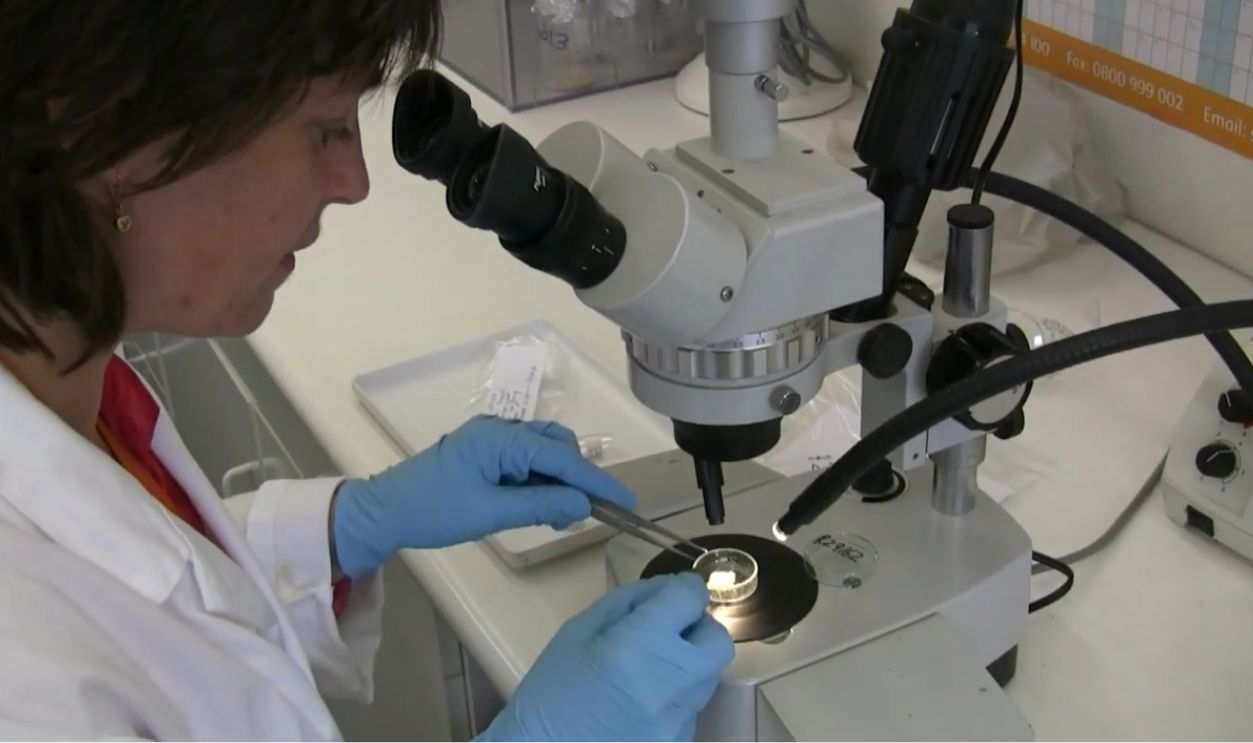 Dating - the Radiocarbon Way by GNS Science
Dating - the Radiocarbon Way by GNS Science
Fecal Biomarkers Confirm The Finds
In 2020, researchers turned to fecal biomarker analysis—measuring stable molecules like 5β-stanols and bile acids unique to human gut waste. Unlike DNA, these biomarkers don’t migrate through soil, making them rock-solid indicators of poop origin. The result? Coprolites thought to be human were chemically confirmed as such, while others showed clear carnivore or herbivore profiles. It was chemical evidence that left no room for doubt: some of the Paisley droppings were indisputably human—and over 14,000 years old.
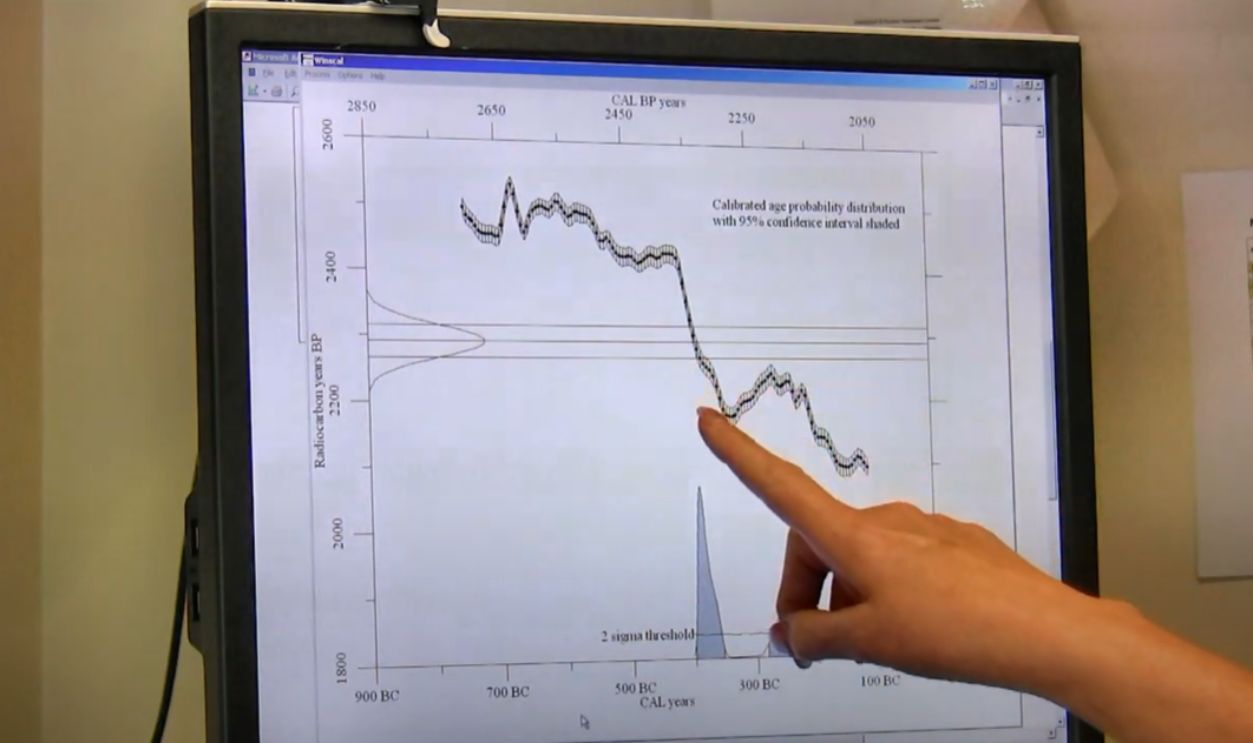 Dating - the Radiocarbon Way by GNS Science
Dating - the Radiocarbon Way by GNS Science
The 2017 Re-Examination Project
In 2017, an international team re-examined Paisley Cave sediments and coprolites using the latest methods—independent DNA testing, stratigraphic mapping, and biomarker studies. Their mission: to test Jenkins’s bold pre-Clovis claims head-on. Published in Science Advances in July 2020, the results were definitive: Jenkins was right. The evidence held up under every challenge, proving that rigorous re-testing doesn’t weaken strong data—it seals it.
Settling The Debate
Thanks to a wave of interdisciplinary studies in the late 2000s and 2010s, the Paisley Caves debate is largely over. Genetic, chemical, and stratigraphic data all aligned to confirm that humans were present in Oregon more than 14,000 years ago. The controversy that once raged has cooled, replaced by broad archaeological consensus.
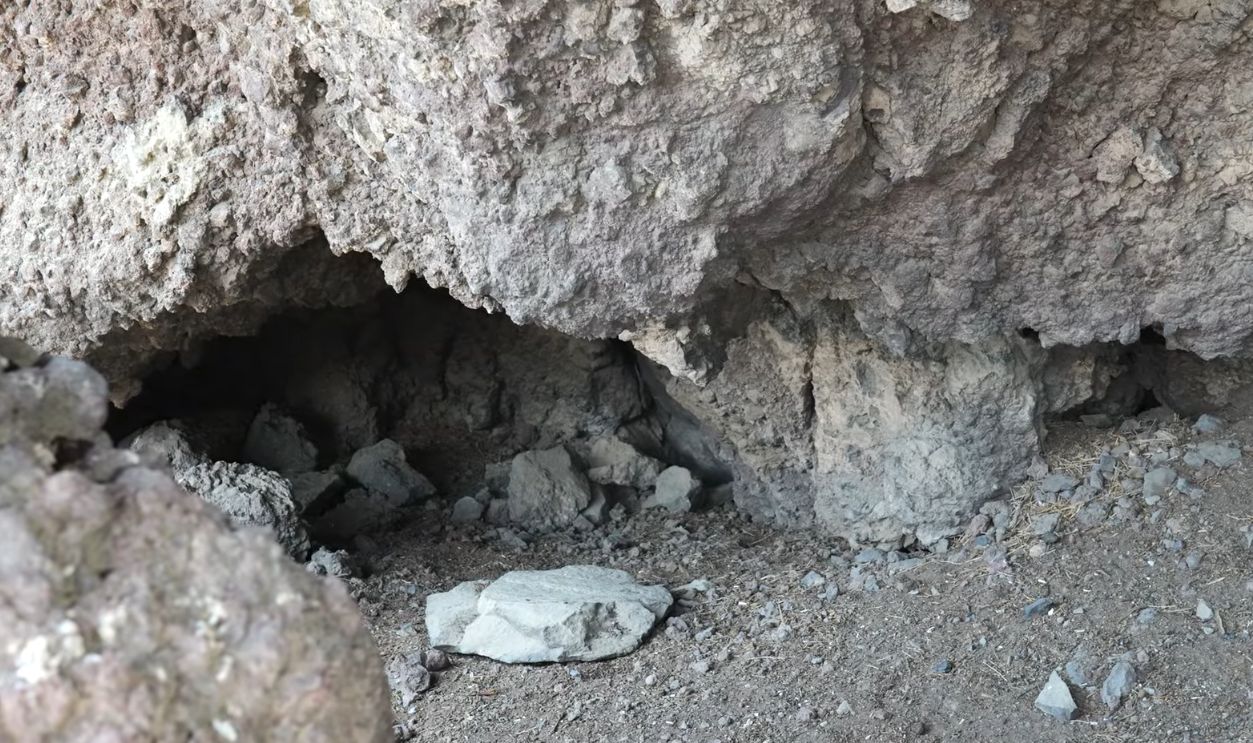 Paisley Caves, video 2, 6k, water_skipper
Paisley Caves, video 2, 6k, water_skipper
Breaking The Clovis Barrier
The Paisley Caves weren’t alone in challenging the Clovis-first model—they became a key player in a growing body of evidence. Alongside sites like Monte Verde in Chile (~14,500 years ago), Paisley’s human coprolites and tools helped prove that people were in the Americas well before Clovis spear points appeared. The Clovis timeline wasn’t pushed—it was shattered. Today, the Paisley Caves stand as a cornerstone in the new understanding of early American migration.
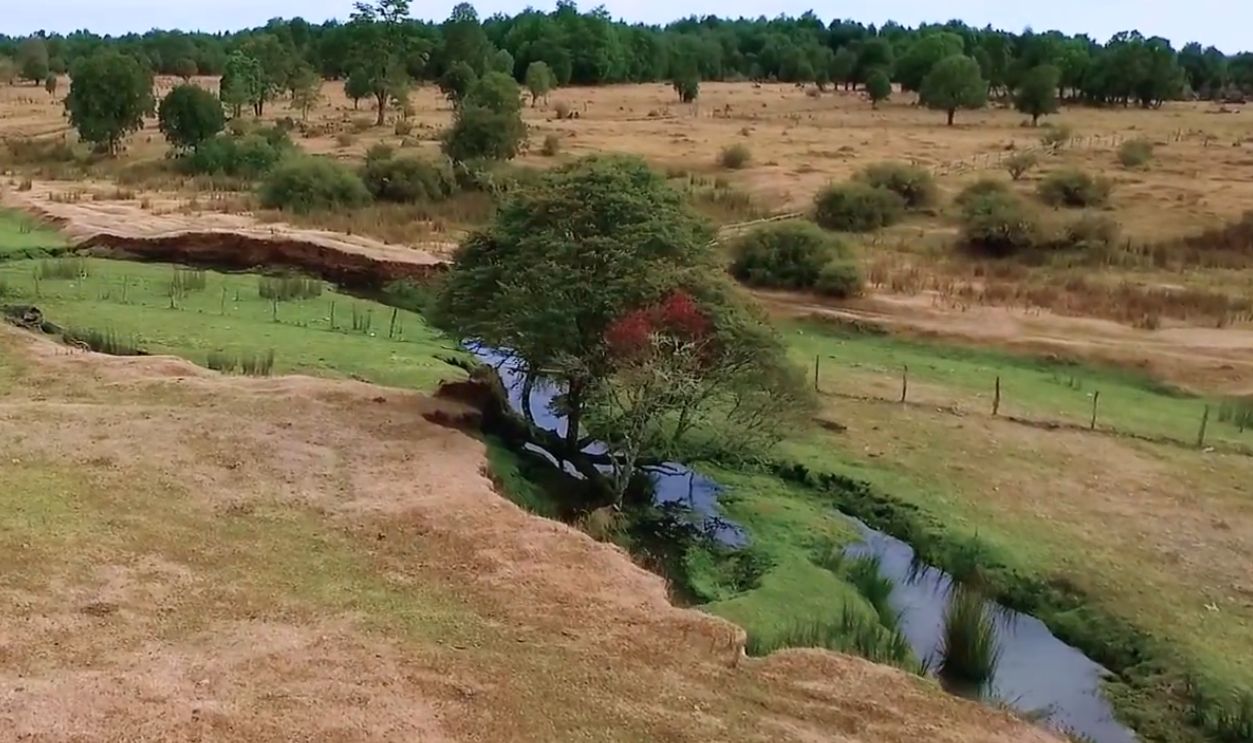 Monte Verde - Archaeological Site, MAV Drone
Monte Verde - Archaeological Site, MAV Drone
Two Traditions, One Land: Clovis VS Western Stemmed
For decades, Clovis points were considered the hallmark of America’s first people, but the Paisley Caves told a different story. The Western Stemmed Tradition, represented by narrow, stemmed projectile points, appeared in Oregon cave layers dating to the same time as the Clovis culture, around 13,000–14,000 years ago. That meant two distinct technologies coexisted on the continent, likely reflecting separate migration routes or cultural groups. Far from a single origin story, the Paisley Caves revealed a diverse and dynamic people of Ice Age America.
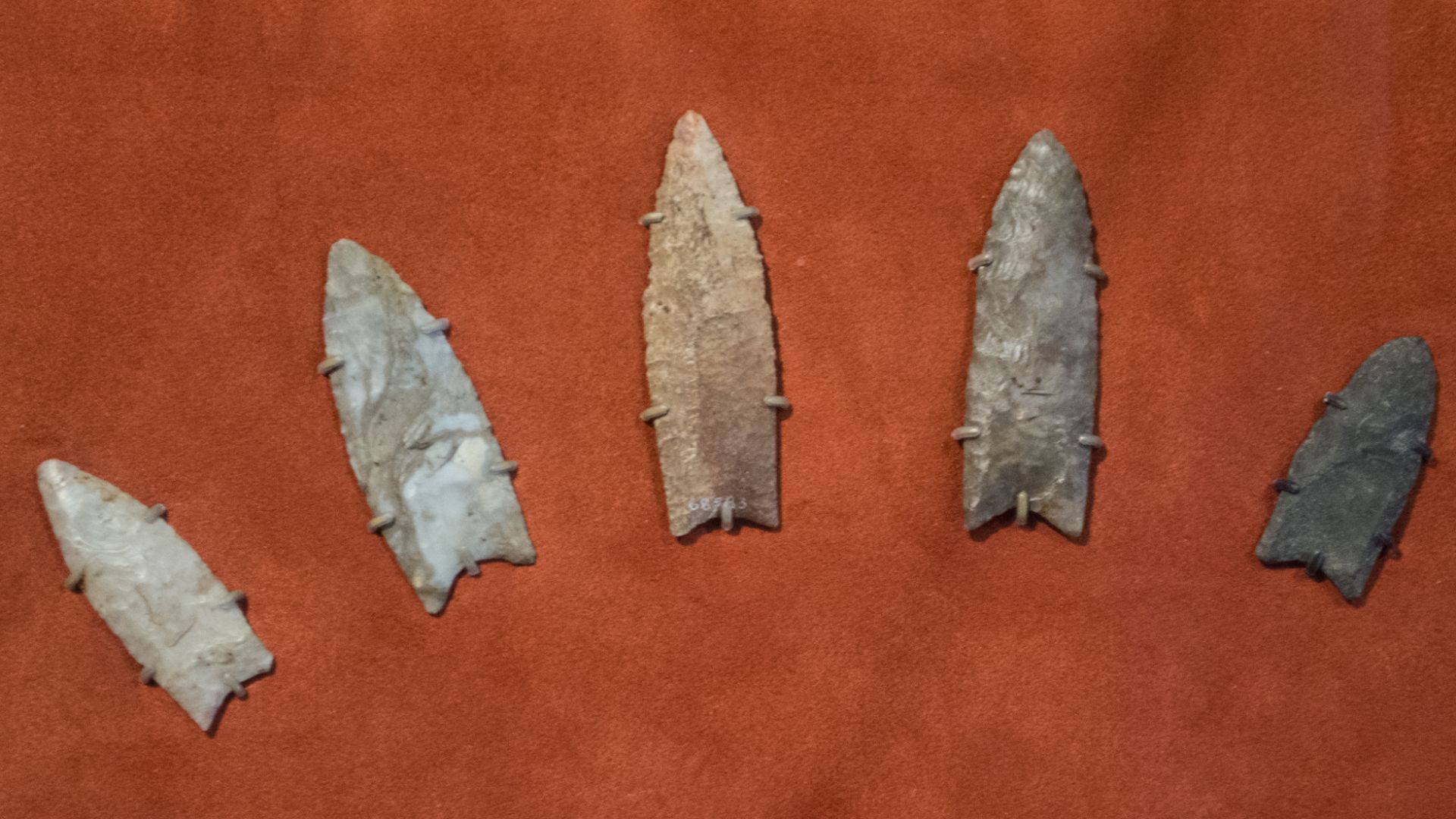 Tim Evanson, Wikimedia Commons
Tim Evanson, Wikimedia Commons
From Siberia To Oregon: Ancient DNA Tells Migration Stories
Genetic analysis of Paisley coprolites revealed mitochondrial DNA haplogroups common in Indigenous peoples of the Americas, tracing back to northeast Asia. This confirms that Paisley’s pre-Clovis inhabitants descended from those who crossed Beringia during the last Ice Age—not a separate migration. Far from being an outlier, their DNA places them firmly within the ancestral lineage of modern Native Americans. In short, the journey from Siberia to Oregon happened earlier—and farther—than we once thought.
 What's It Really Like To Live In An Ice Age? | Unveiled by Unveiled
What's It Really Like To Live In An Ice Age? | Unveiled by Unveiled
Paisley And Coastal Migration
The age and location of the Paisley Caves—deep in Oregon’s interior—bolster the theory of a Pacific coastal migration into the Americas. If people were already inland by 14,300 years ago, they likely traveled south along the ice-free Pacific coast, then inland through river corridors like those leading to Summer Lake. The site fits perfectly into this model, suggesting its earliest visitors were descendants of coastal explorers.
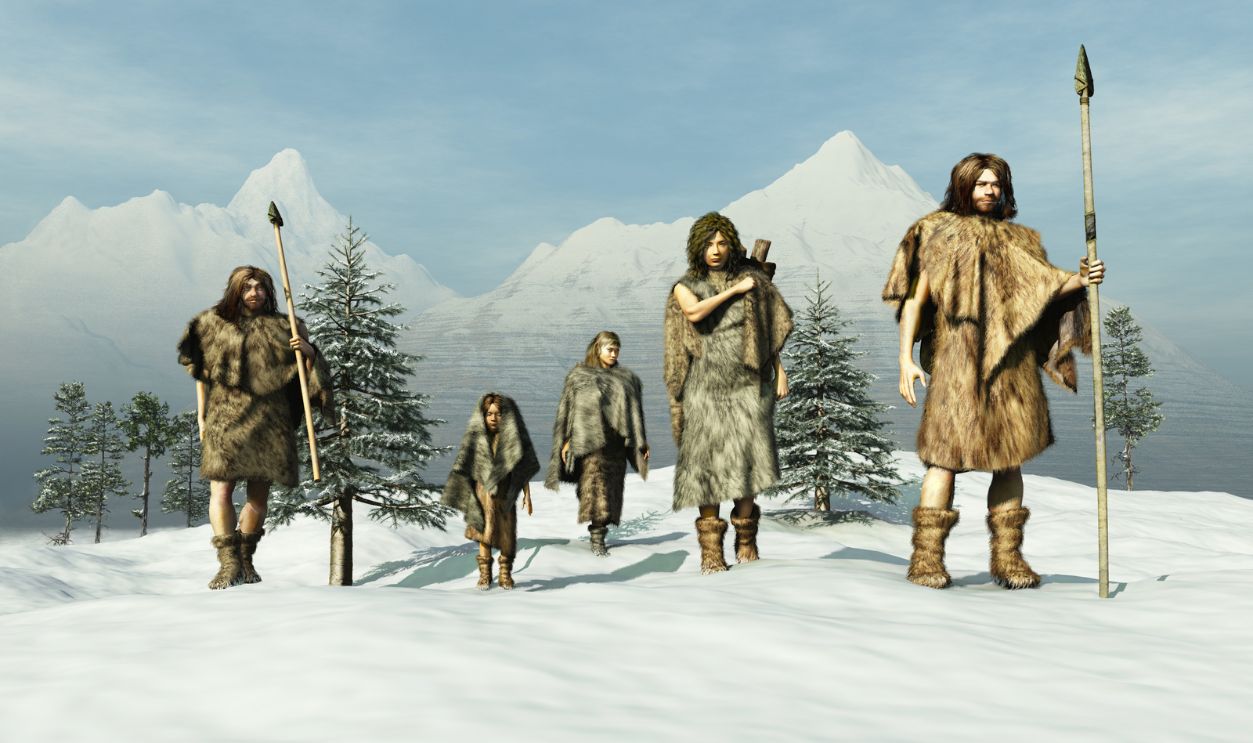 Esteban De Armas, Shutterstock
Esteban De Armas, Shutterstock
The Paisley Caves' National Register Status
In 2014, Paisley Five Mile Point Caves earned a place on the National Register of Historic Places, officially recognizing their role in American prehistory. This status brings official protection, restricts public access to prevent looting, and helps secure funding for research and preservation. For a remote site in the Oregon desert, the designation marked a turning point—from scientific controversy to national treasure. The listing ensures that the Paisley Caves’ fragile record will be preserved for future generations and continued discovery.
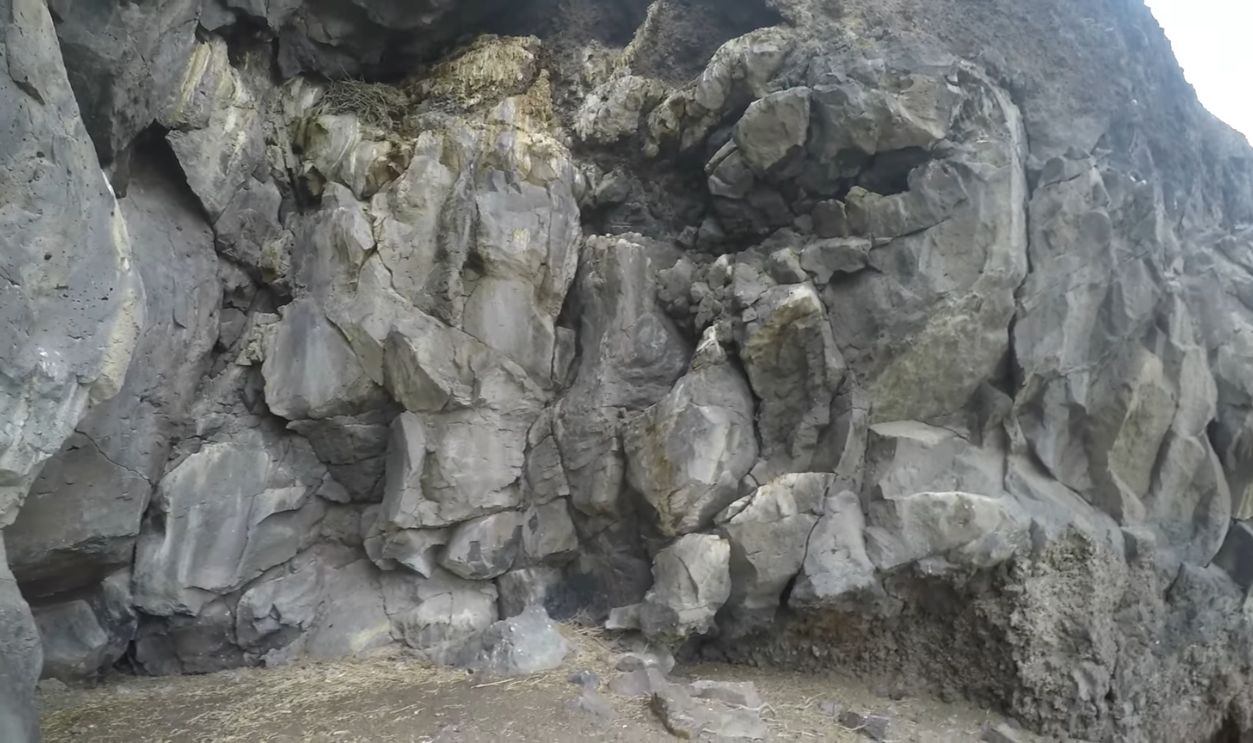 Paisley Caves, part 2, 1520p60, water_skipper
Paisley Caves, part 2, 1520p60, water_skipper
Protecting A Fragile Site
With global attention came real responsibility. The Paisley Caves, located on public land managed by the Bureau of Land Management (BLM), are now actively protected through a mix of regulatory measures, minimal signage, and regular monitoring. Archaeologists and volunteers act as stewards, ensuring no looters or curious hikers disturb the fragile deposits. Even a single unauthorized dig could erase thousands of years of history. Paisley remains a scientific treasure, not a tourist casualty.
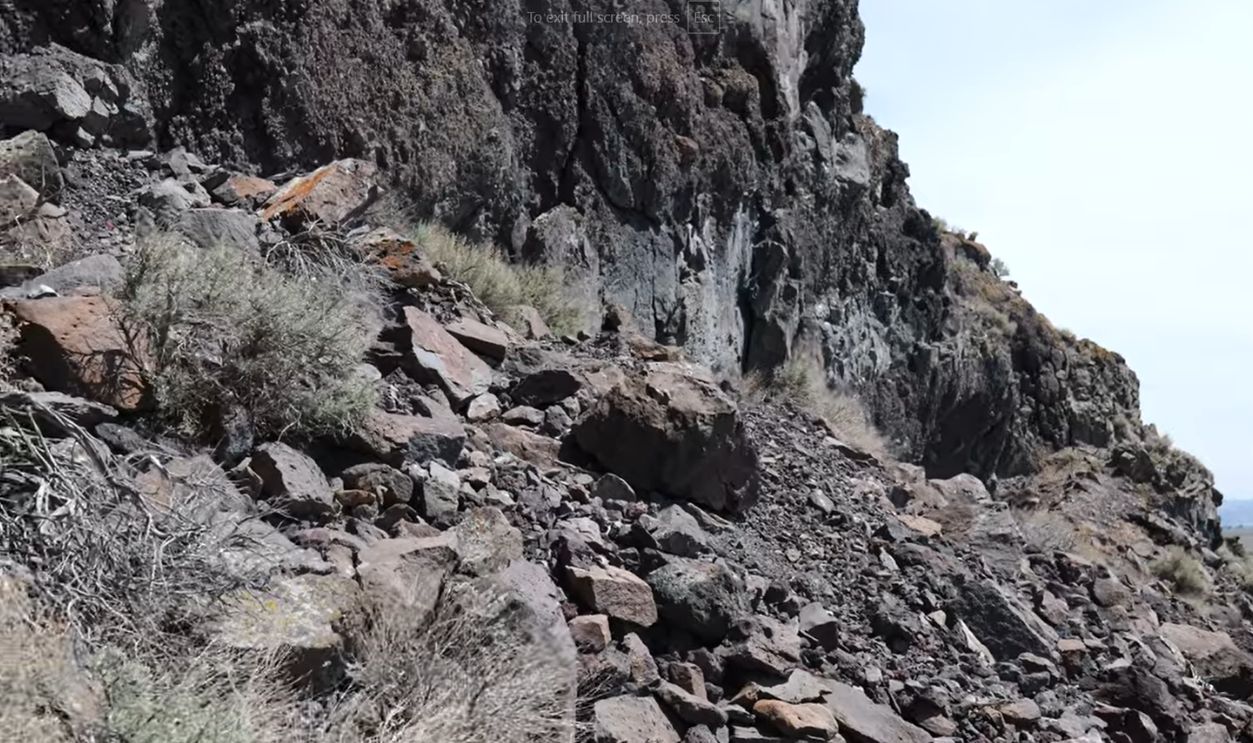 Paisley Caves, video 2, 6k, water_skipper
Paisley Caves, video 2, 6k, water_skipper
Visiting The Paisley Caves Today
For those interested in seeing the Paisley Caves firsthand, it is possible with a bit of effort. A modest 0.45-mile hike through Oregon’s high desert leads to the unassuming cliffside caves—no signs, no fences, just echoes of the Ice Age. Visitors can see sandbags from earlier digs and gaze across what was once the fertile Summer Lake basin, now a dry alkali flat. It’s quiet, raw, and hauntingly real. Those who make the trek are walking into one of the oldest human stories in North America—and are urged to leave it exactly as they found it.
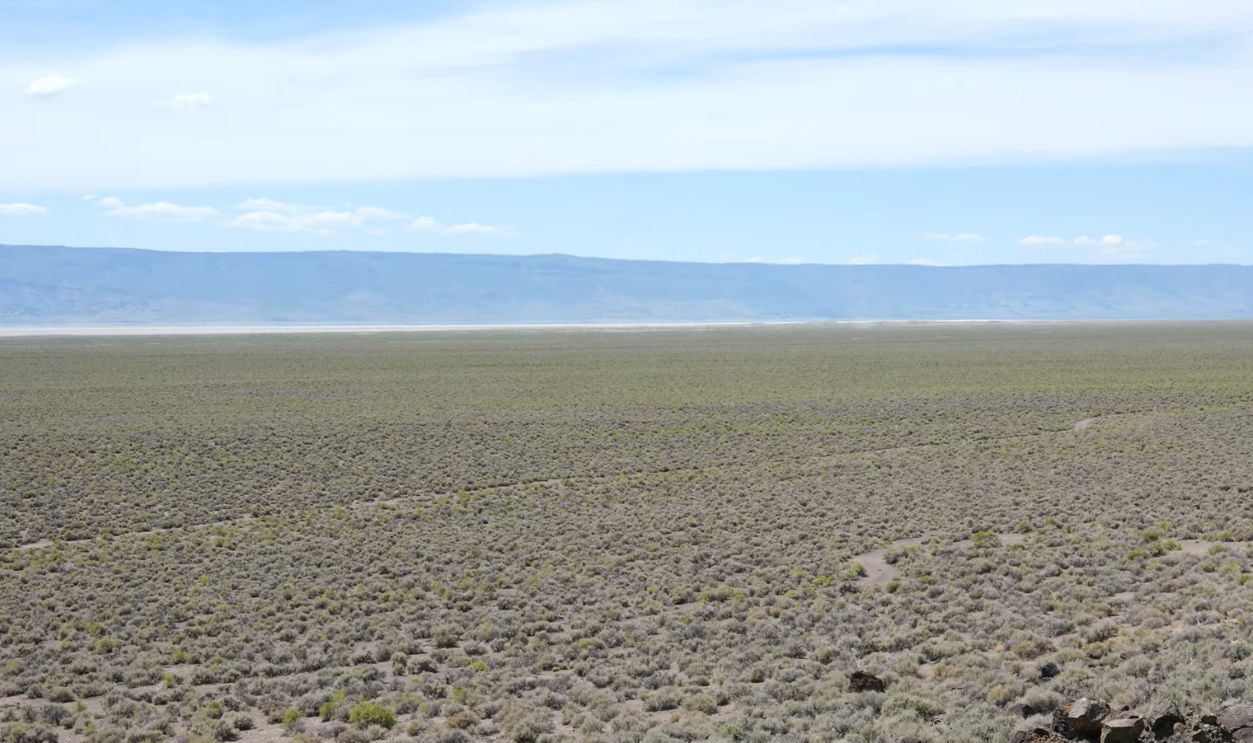 Paisley Caves, video 2, 6k, water_skipper
Paisley Caves, video 2, 6k, water_skipper
Sagebrush Sandals: A Nearby Cave’s Ancient Footwear
About 60 miles from Paisley, Fort Rock Cave yielded dozens of sagebrush-bark sandals in 1938. These woven shoes, dated to 9,000–10,000 years ago, are the oldest known footwear in the world. Though younger than the Paisley Caves finds, they show how Oregon’s early inhabitants developed advanced crafts and adapted to their environment. Together, Paisley’s coprolites and Fort Rock’s sandals showcase the region’s deep archaeological legacy.
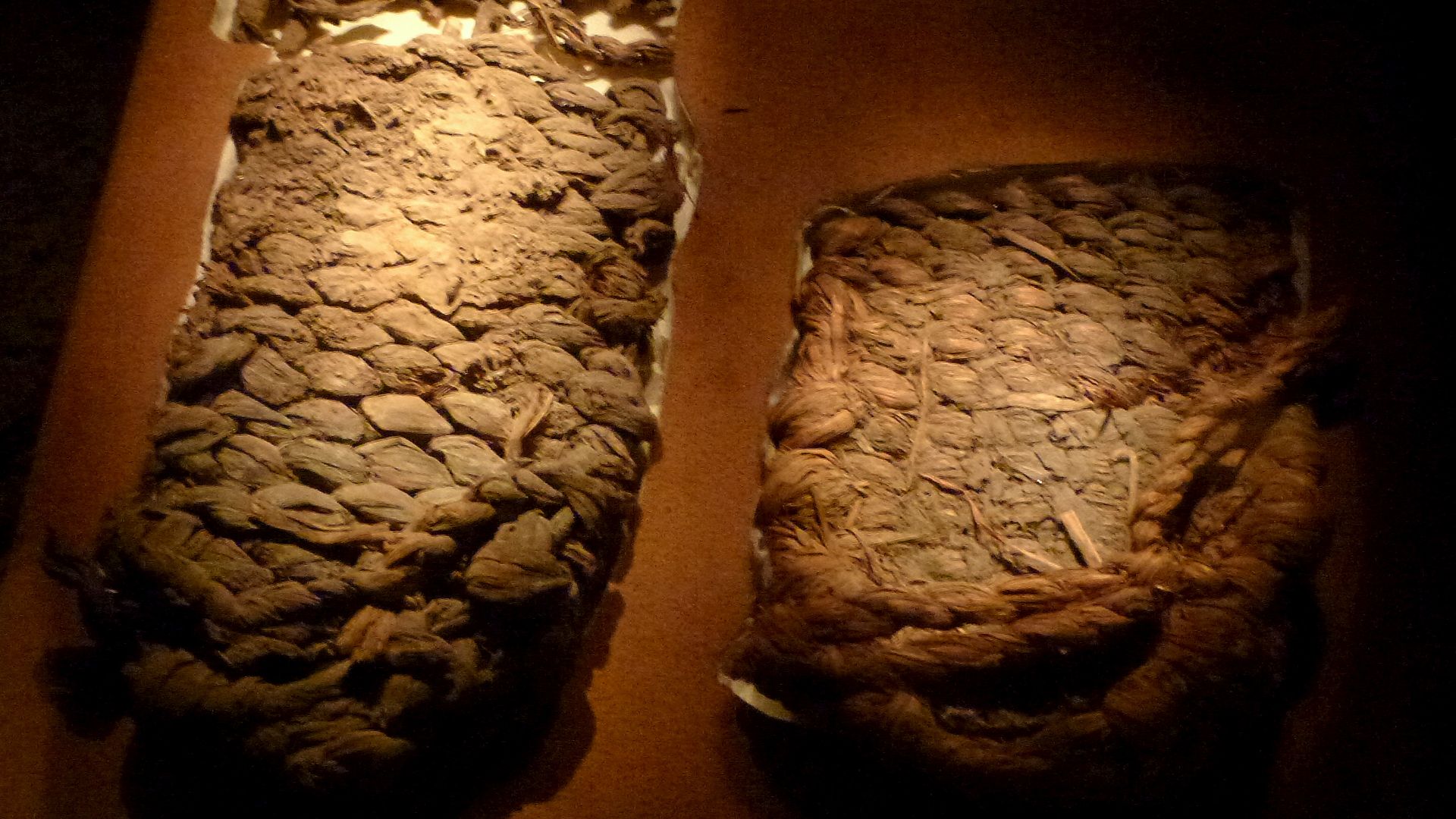 Ian Poellet, Wikimedia Commons
Ian Poellet, Wikimedia Commons
Unanswered Questions: Mysteries Yet To Solve
The Paisley Caves answered the big question—were humans here before the Clovis culture?—with a resounding yes, but many mysteries linger. No skeletal remains have been found, and the cultural connections between Paisley’s people and other groups remain unclear. Did they adopt Clovis tools later? Were they coastal migrants? The answers may still lie deeper underground or in yet-undiscovered nearby sites. For now, the Ice Age story remains incomplete—but wide open for the next chapter.
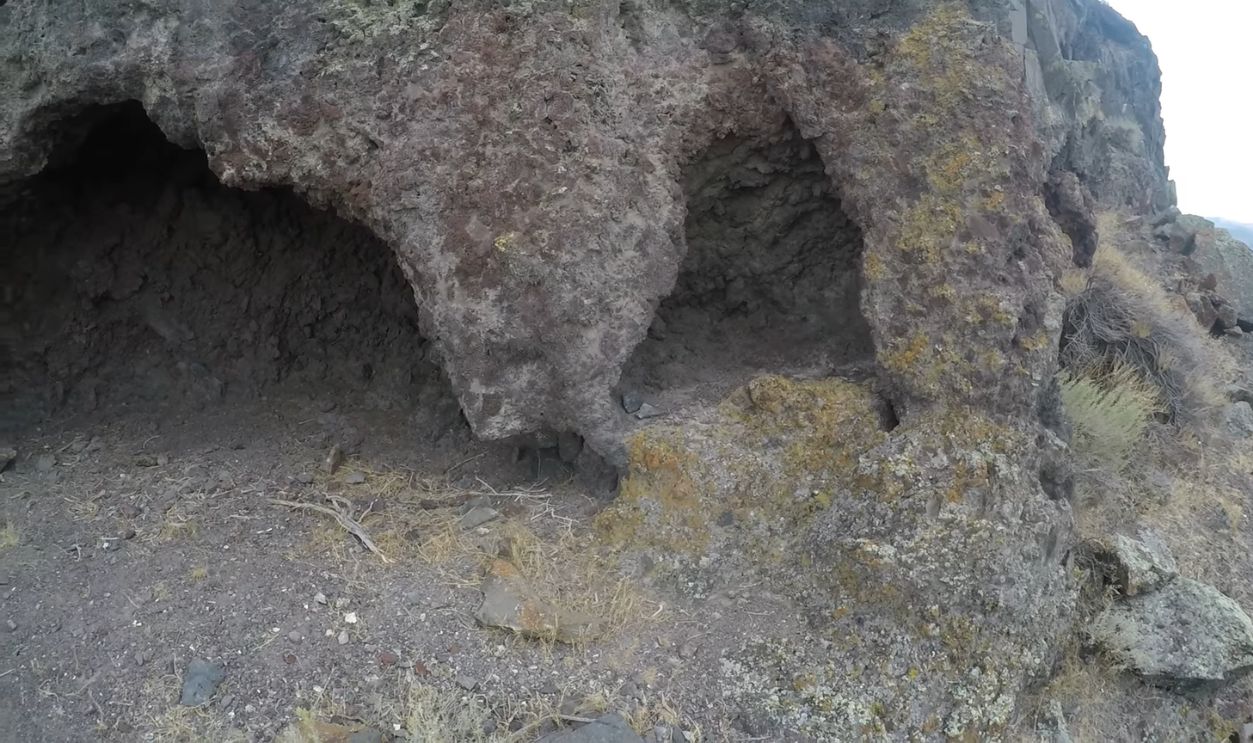 Paisley Caves, part 2, 1520p60, water_skipper
Paisley Caves, part 2, 1520p60, water_skipper
Why The Paisley Caves Still Matter
The Paisley Caves didn’t just shift timelines, they transformed how we investigate early human history. The site’s legacy lives on in new techniques, bold questions, and expanded searches across the Americas. Researchers continue to probe nearby regions and reanalyze materials using methods honed at Paisley. It’s not just a site, it’s a scientific launchpad still fueling discovery, reminding us that sometimes the past hides in the most unexpected places... like fossilized poop.
 Paisley Caves, part 2, 1520p60, water_skipper
Paisley Caves, part 2, 1520p60, water_skipper
You May Also Like:
The Cave Markings That Changed What We Know About The Neanderthals
The White Sands Footprints Redefined What We Know About The First American Settlements

